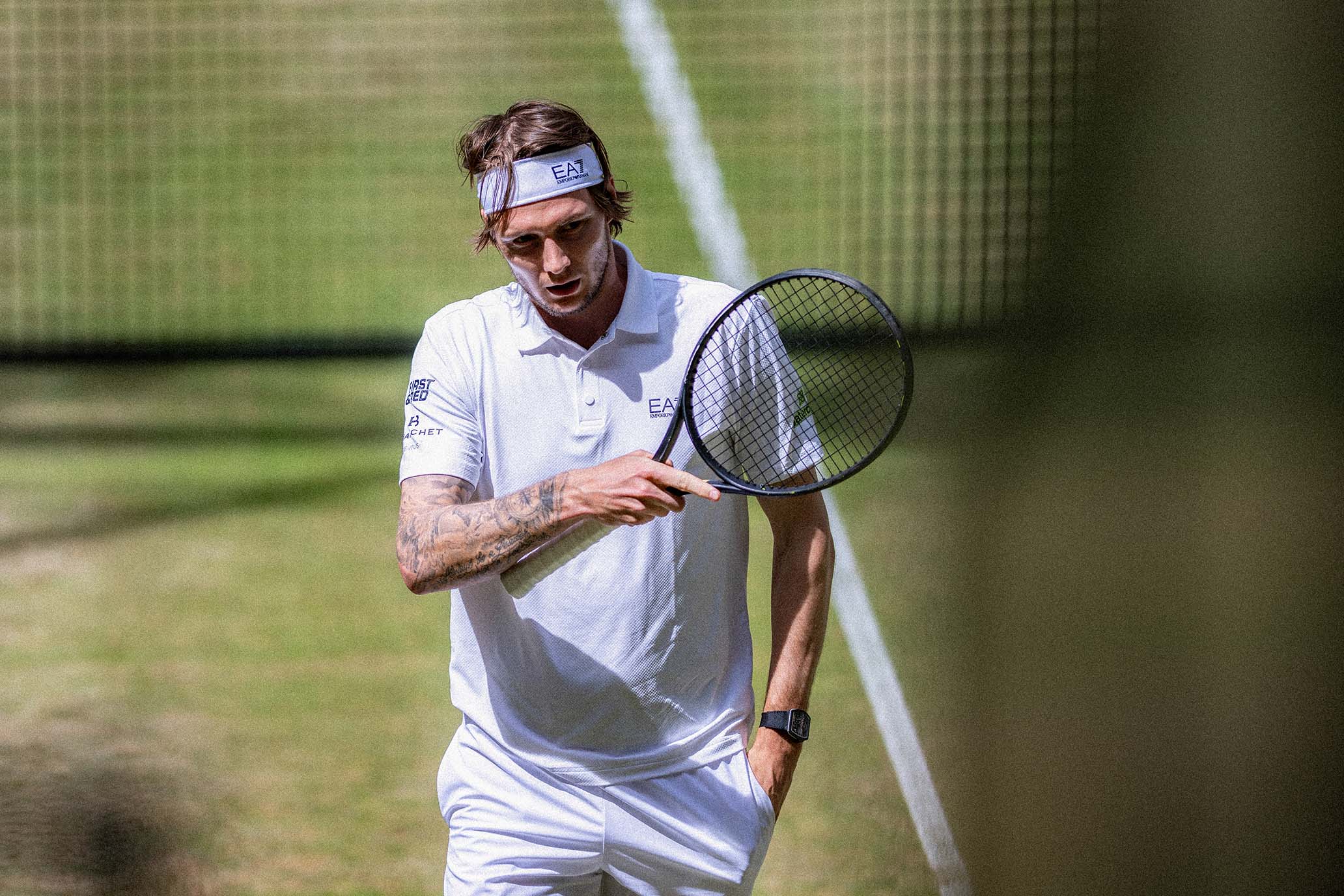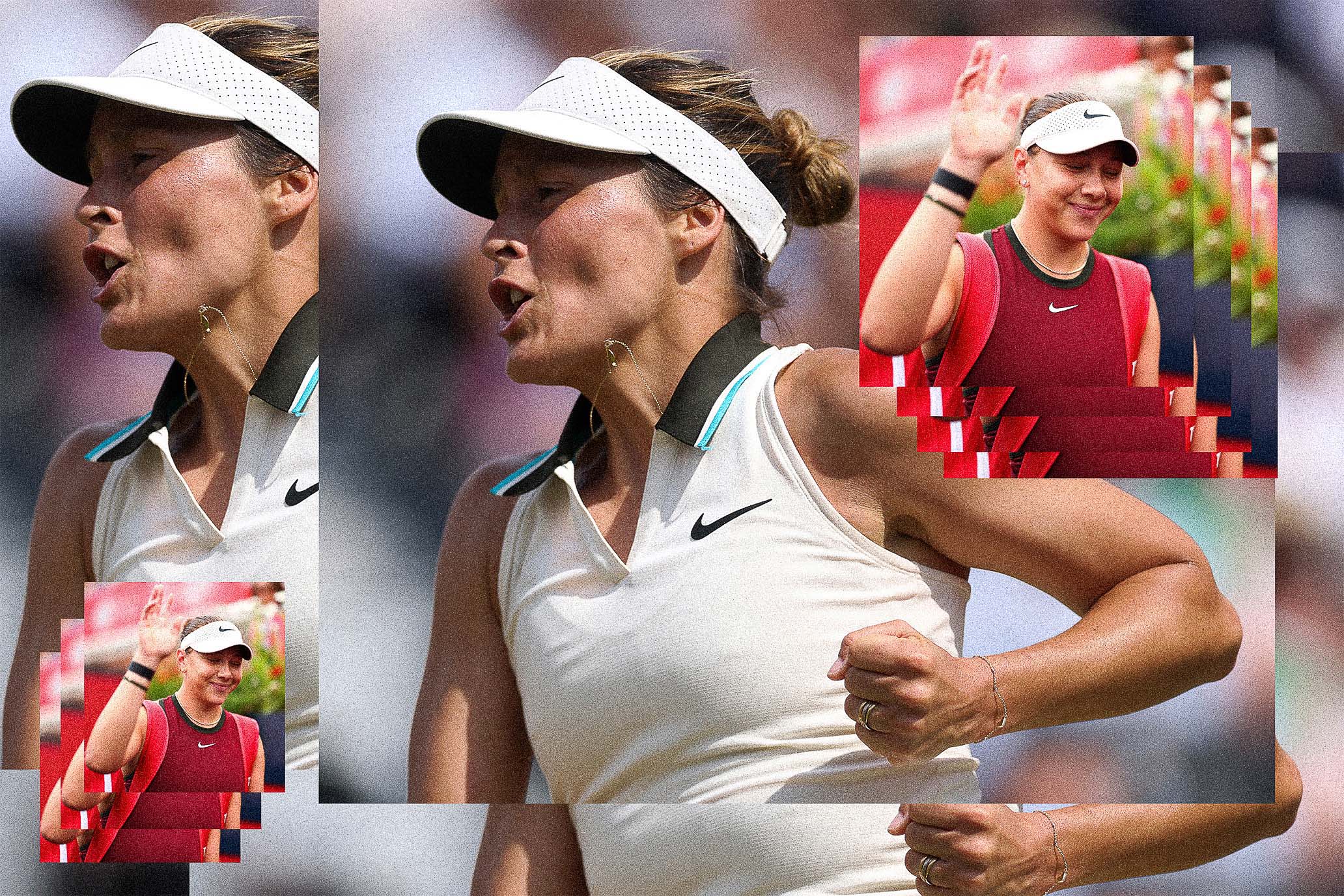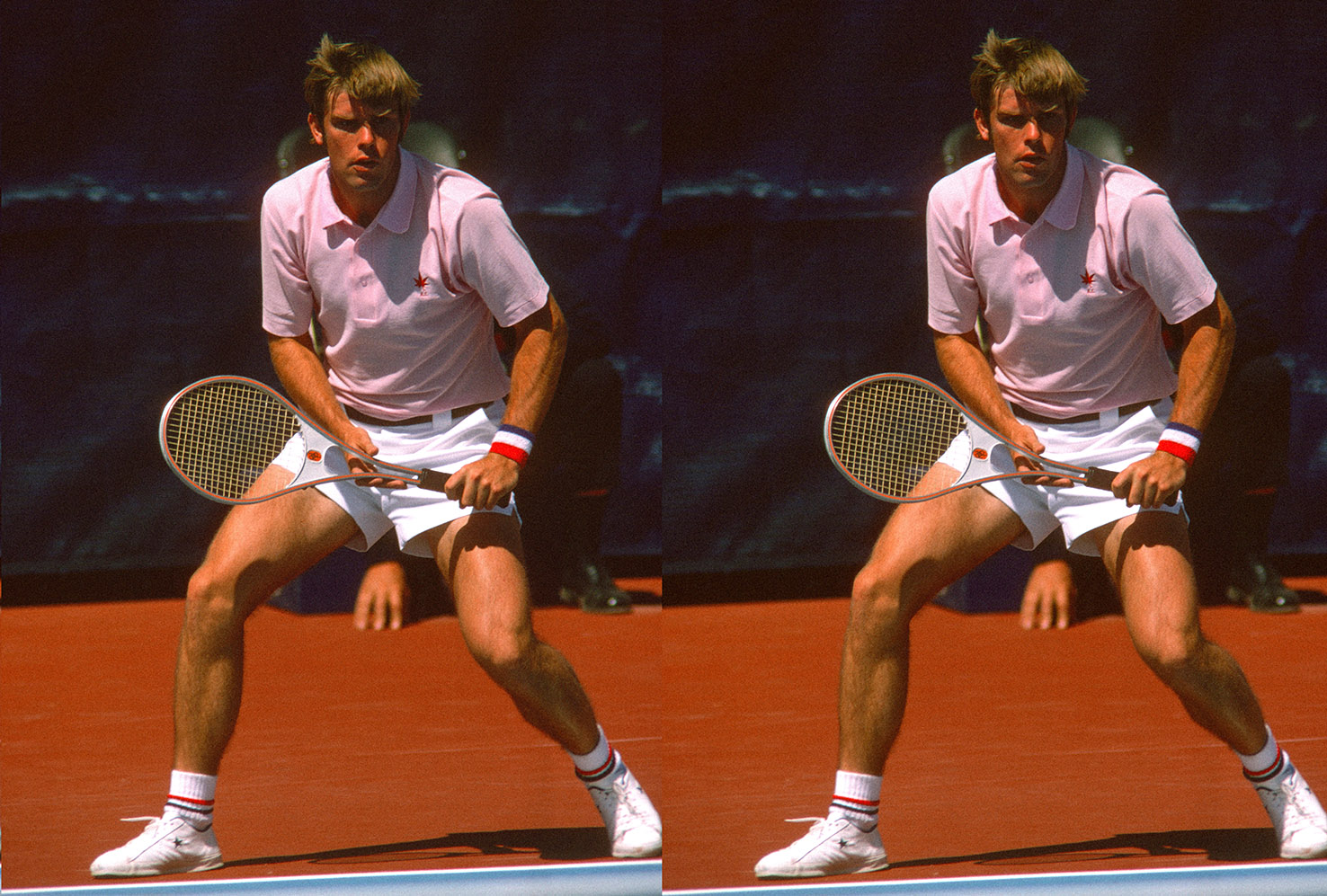Tears of a Clown
Tears of a Clown
Tears of a Clown
For Sascha Bublik at Wimbledon, anything can happen.
For Sascha Bublik at Wimbledon, anything can happen.
By Giri Nathan
June 27, 2025
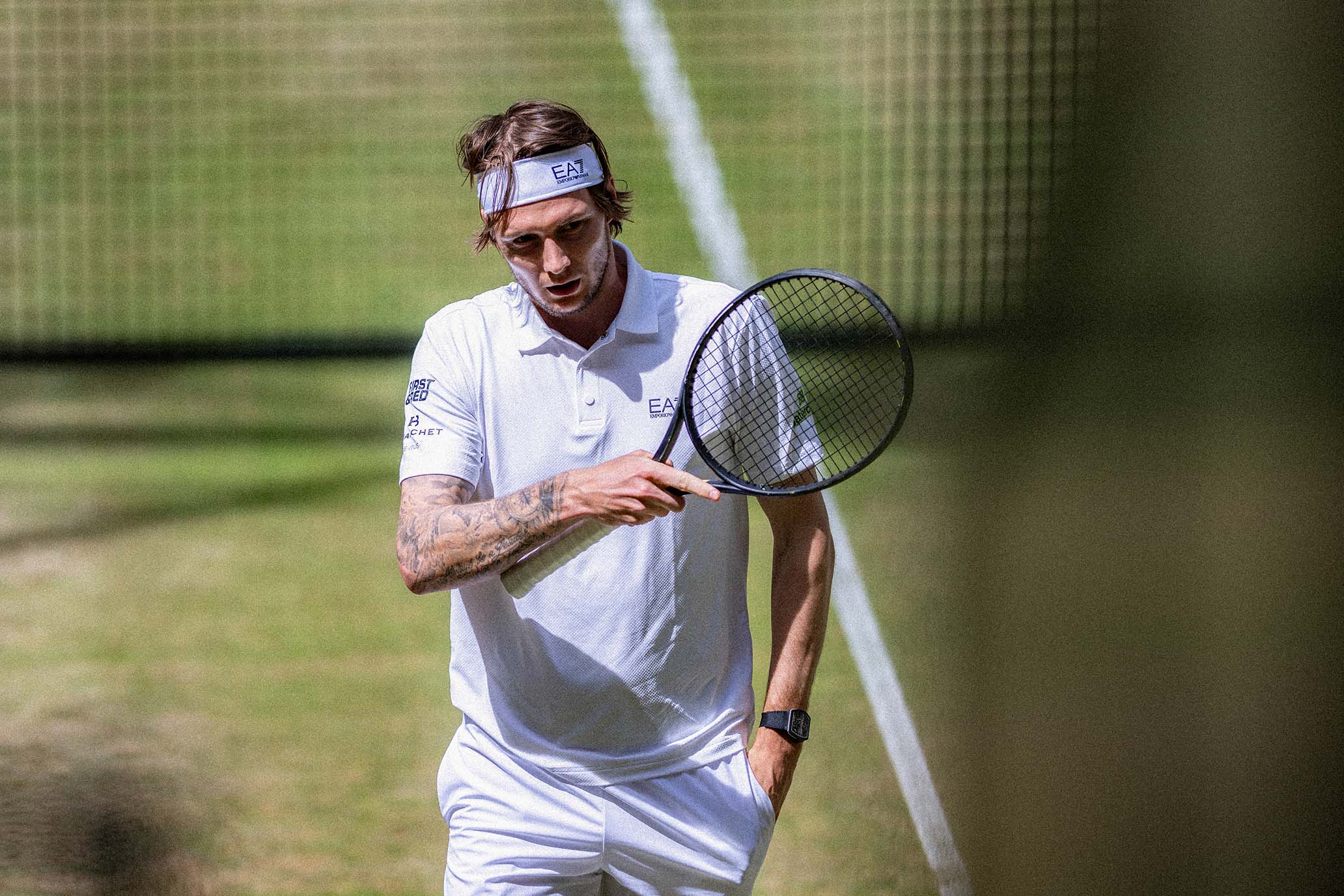
Sascha Bublik during his winning campaign at Halle. // Getty
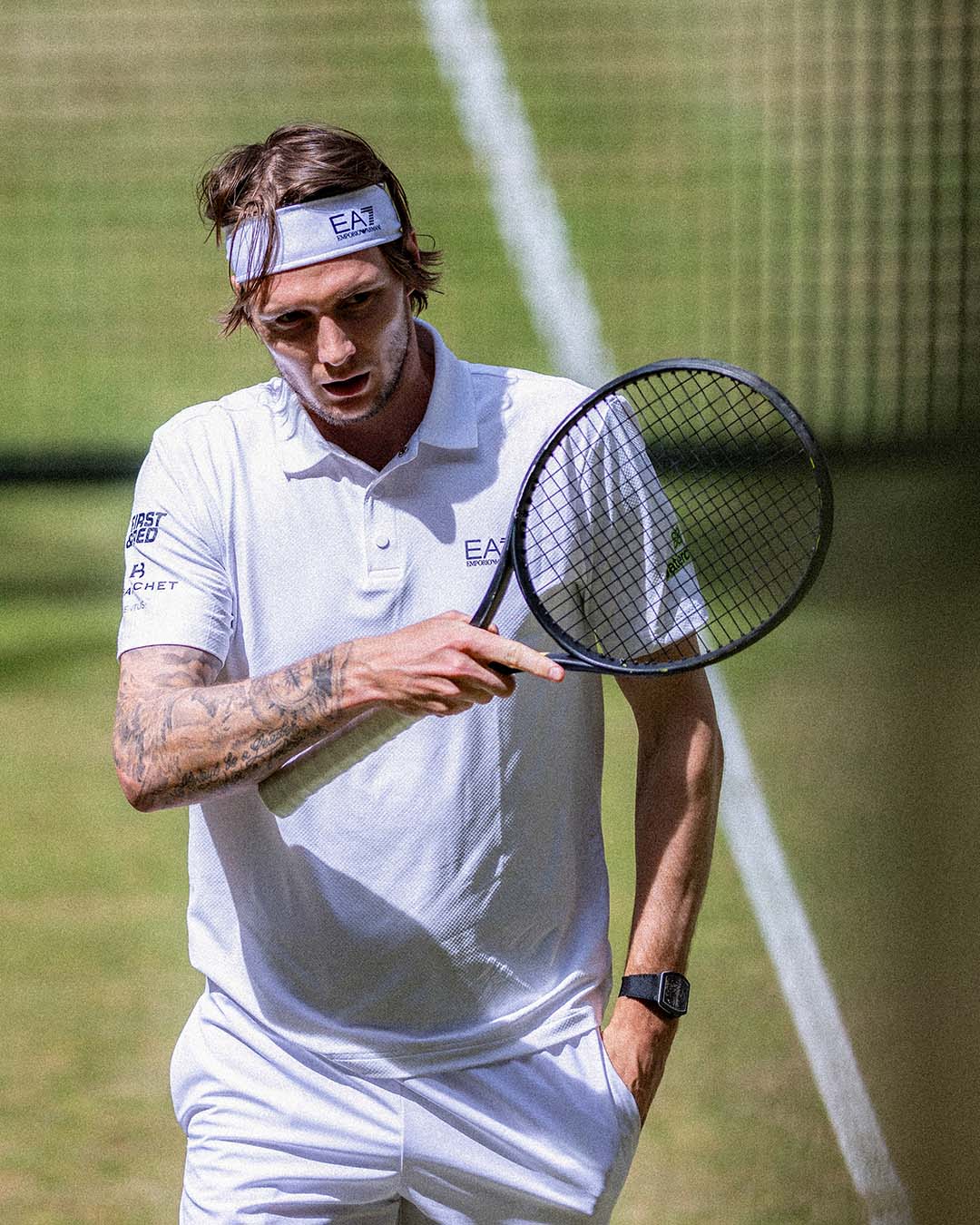
Sascha Bublik during his winning campaign at Halle. // Getty
On June 19, Jannik Sinner shocked the world, or at least me, a person who’d spent the past year thinking I had him mostly figured out. The No. 1 player in the world released a musical collaboration with the singer Andrea Boccelli. The world-famous tenor delivers his operatic swells in Italian, and Sinner offers wooden bits of spoken word in English. The tennis player opens the song with this invaluable wisdom: “In our lives there will always be many first times. All you have to do is, is [sic] to be yourself.”
Nobody on the ATP follows that maxim—be yourself—more faithfully than Sascha Bublik, the shaggy, smirking showman who represents Kazakhstan. His tennis is an unabashed reflection of his personality: expressive, trollish, darkly comic. He is a tall servebot that has been augmented with surprisingly soft touch. He has a taste for drop shots and trick shots, and a tendency to tank sets or even entire matches; he likes to talk about how much he values his life outside of tennis and doesn’t want to sacrifice too much at the altar of his career. He speaks with awe about the inhuman work ethic of the very top players, and clearly cherishes his own humanness. That archetype might sound a little familiar to you, and yes, he is basically a Nick Kyrgios without the baggage and with an active ATP career. On the same day that Sinner made his musical debut about being oneself, Bublik, always himself, managed to upset the top seed and defending champion at Halle in three sets.
Bublik can beat pretty much anyone if he’s having a good day and they’re having a bad day. But Jannik Sinner has effectively purged bad days from his tennis life. It was the first time since August 2023 that Sinner had lost to a player ranked outside the top 20. It was also the first time since August 2024 that a human being not named Carlos Alcaraz had managed to beat him. For Bublik, this was a career-best upset. He had a dozen top 10 wins but had never before beaten the tour’s No. 1 player. Barely a month earlier, Bublik had been routed by Sinner in straight sets and wrote sarcastically on Instagram: “I almost got him guys.”
After their match in Halle, he offered a pleasant update: “I got him guys.”
Bublik, rarely blessed with consistency, kept marching along after the upset, beating Tomas Machac, Karen Khachanov, and even Daniil Medvedev to reclaim the Halle title that he’d won in 2023. “From the mental point of view, that’s the toughest match I ever played in my life,” said Bublik after the final. In his six previous matches against Medvedev, he had won just one set. “I have never beaten Daniil. He’s a super tough player to play, especially with my game style, and today everything clicked in mentally and physically.”
It has been a season of renewal for the 28-year-old Bublik, who said he considered quitting tennis around this time last year. As recently as this March, he had lost 18 of his previous 22 matches. He fell to No. 82 in the world after Indian Wells. His reasonably secure top-40ish career was in peril. As with so many players, dropping down a rung of competition helped him rebuild some form. His fortunes began to turn at the Challenger in Phoenix, where he made the final. During the clay season, typically his most wretched stretch of the calendar, he picked up a Challenger title in Turin. Clay season concluded with perhaps the most miraculous moment of his career to date: At Roland-Garros, he made his first Slam quarterfinal, beating top 10 seeds Alex de Minaur and then Jack Draper, after which he wept and savored the applause of the crowd. This longtime jester was now taking part in disorientingly sincere interviews about seizing the moment. “You know, sometimes in life there is only one chance, and I had a feeling like that was mine,” Bublik said after the fourth-round Draper win at Roland-Garros. “I couldn’t let it slip. So, standing here, this is the best moment of my life. Period.” I received texts from friends who were enjoying their first-ever exposure to Bublik. And it must have been nice. But those tears were even richer, emotionally, if you’d witnessed the dozens of clownish episodes in the years leading up to that point. (I highly recommend his conversation with Casper Ruud and Benoit Paire, and in particular his phrase “Check the fact sheet,” if you want a better sense of Bublik’s life philosophy.)
That life-peak run at Roland-Garros was ended unceremoniously by Sinner; Bublik has already exacted his revenge on grass. Now he is about to enter Wimbledon as a No. 28 seed that no player wants to see in his draw. Bublik’s best surface is grass, where his big serves and skidding off-speed shots grow more lethal. In his runner-up speech at Halle, Medvedev openly asked his peer to eliminate Sinner or Alcaraz from the Wimbledon draw, opening things up for everyone else’s sake. On the lawns of southwest London, Bublik could sputter out in round 1, or he could defeat two top 10 players. Both outcomes feel equally possible to me at this moment. Therein lies the Bublik magic.
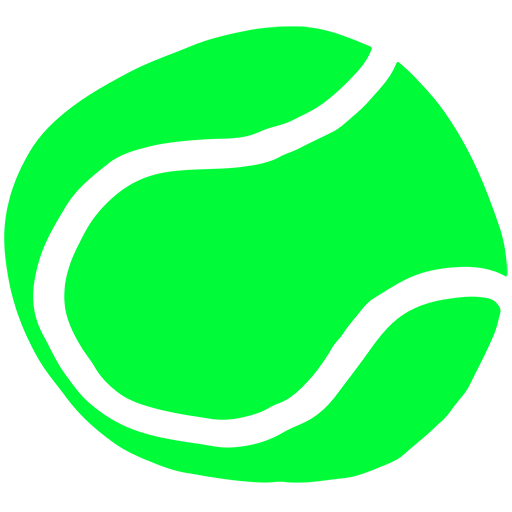
PURE, ORIGINAL TENNIS — SIGN UP!
Late to the Ball
Late To the Ball
Late To the Ball
Tatjana Maria, Amanda Anisimova, and the triumph of the never-too-late attitude.
Tatjana Maria, Amanda Anisimova, and the triumph of the never-too-late attitude.
By Carole Bouchard
June 19, 2025
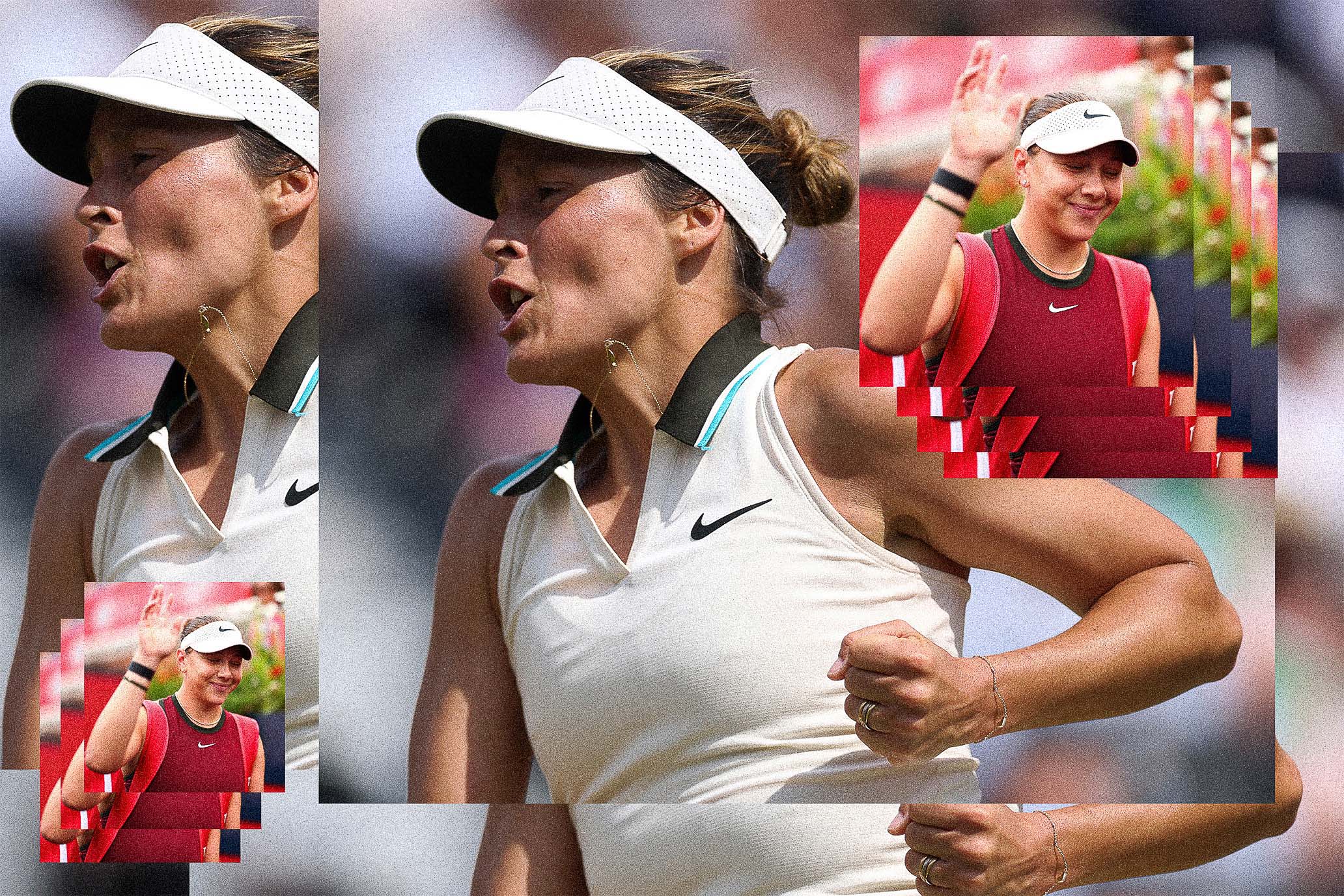
It was a big week at Queen's for Tat Maria and Amanda Anisimova. // Getty
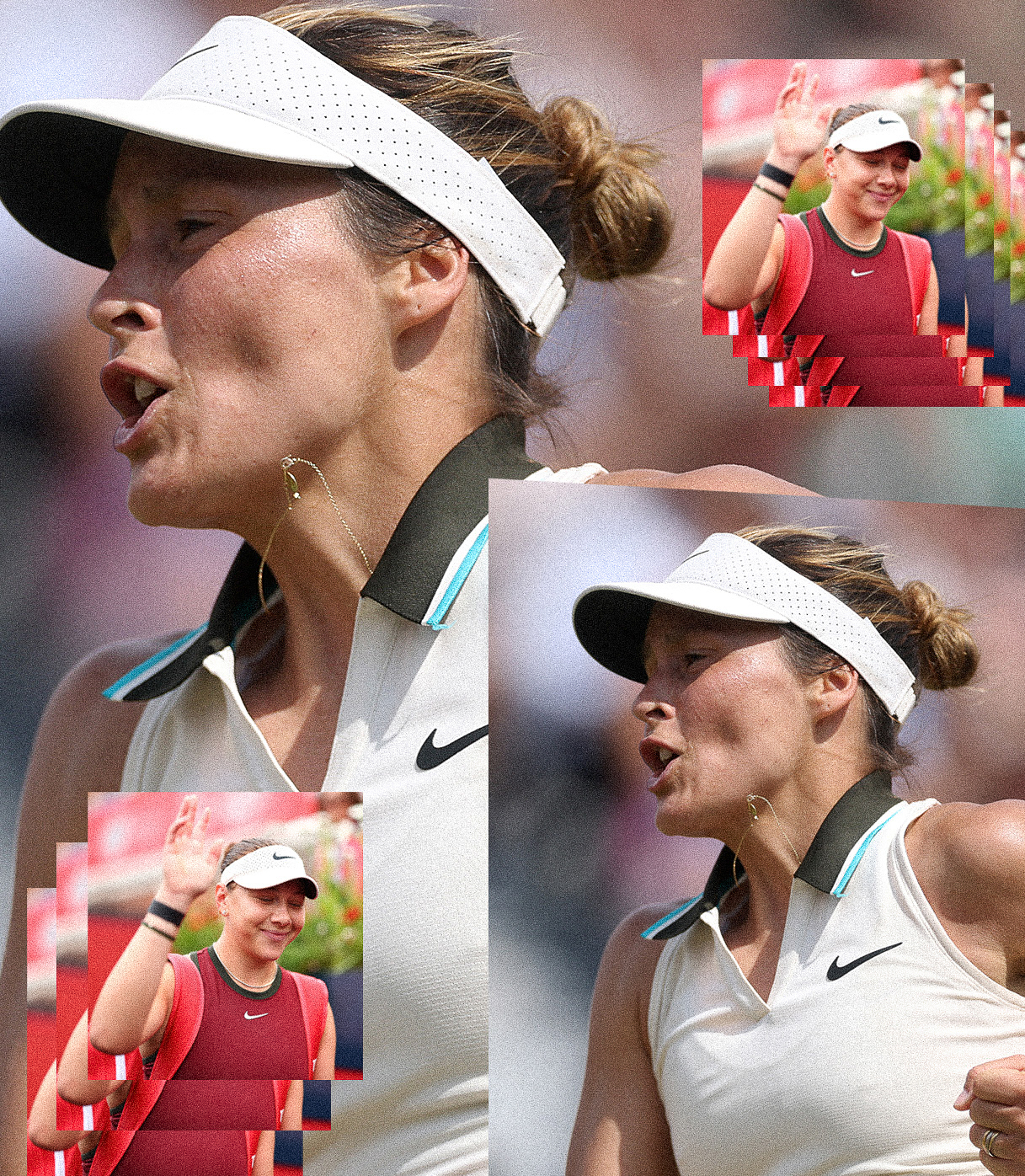
It was a big week at Queen's for Tat Maria and Amanda Anisimova. // Getty
Tatjana Maria and Amanda Anisimova launched their grass seasons at the Queen’s Club by showing again that it’s never too late to win big, and never too late to reset your career.
The grass may host a blink-and-you-miss-it season, but it always delivers on the drama and the storylines, and it lived up to its billing in its first week. Women’s tennis was back at Queen’s for the first time since 1974, and the players returned in style, giving tennis a fairy-tale ending. Disney is calling, wanting a word with Tatjana Maria.
Maria, 37 and ranked 86th in the world, hadn’t won a single first-round match in her previous nine tournaments when she entered qualifying at Queen’s. Sure, we knew her game was perfectly suited for grass, with her sharp backhand slice and her fondness for the net, but it seemed to many that her incredible run to the semifinals at Wimbledon in 2022 was a result plucked from a bygone era. Unbeknownst to the rest of the field at Queen’s, Maria was about to tear through the draw, clinching her fourth title and reminding everyone she was still an opponent’s nightmare on grass.
Maria’s win was an even more poignant story as it came against former wunderkind Amanda Anisimova. Two very different career paths, but the same story, where success only comes when the player is ready. Anisimova, now 23, reached the semifinals at Roland-Garros in 2019 when she was just 17. She had it all: the power, one of the sweetest backhands in the game, and loads of charisma. But life came for her the same year, with the death of her father. And then came her struggles. Anisimova lost her way, despite finding moments of occasional grace, such as her run to the second week at the Australian Open, in 2022, with coach Darren Cahill, and to the quarterfinals at Wimbledon the same year. Still, tennis lost Anisimova when, mentally drained, she decided to take a break in 2023.
Yet, the same way Tatjana Maria found her best game in her 30s, Anisimova, thanks to her run at Queen’s, has reached her highest ranking to date (13th), launching a kind of second career in the process.
While away from tennis, Anisimova went to college, enjoyed a normal life, learned to paint, and only then came back. Because she wanted to, not because she felt she had to. It has taken some time to pay off, and some more time for her body to adjust to the rigors of the tour, but this year she won her first WTA 1000 title in Doha and advanced again to the second week at Roland-Garros. She’s still not as consistent as we’d like, but she’s finally happy to be out there. Will getting to the final at the Queen’s after beating Zheng Qinwen for the first time be a trigger for a deep run at Wimbledon? Let’s see.
Will Queen’s winner Tatjana Maria be propelled to another epic? Maybe. She is nowadays talked about mostly for her longevity and taken as an example of how to have it all, having had two kids by the time she semifinaled at Wimbledon. Sure, before her there was Kim Clijsters, but if you looked for a player who was not a star to give guidance to the field, you always came back to Maria. The German can be seen all season long with her husband/coach and kids in tow, a smile on her face, fire in the racquet.
“It’s incredible to see what she’s doing, and her family is so cute, seeing her kids coming everywhere,” said Anisimova, who would be Maria’s last victim (6–3, 6–4). It’s not just that Maria became the oldest player to win a WTA event. It’s not just that she was on that dreadful nine-first-round loss streak before arriving in West London. And it’s not about what it says about her mental strength that she still wants to go through it all. It’s mostly about who she beat on the way to that title.
After winning three matches in qualies, Maria had to go through four top 20 players to get her hands on the trophy. The lowest-ranked player she faced in the main draw was Canadian Leylah Fernandez (no slouch at 30th in the world). Besides Leylah, Maria went through two more Grand Slam finalists (Karolina Muchova and Elena Rybakina), the reigning Australian Open champion (Madison Keys), and an on-the-rise-again, 14-years-her junior Amanda Anisimova. How many sets were lost in seven matches? One.
“I’m a good example that even at my age, you can still win big trophies,” Maria told the press after the final. “I’m super proud of myself that I could win this tournament because actually, I always believed in it, and my husband too. That’s why we kept going.” Maria winning at the Queen’s, 51 years after the last women’s match was played there, with a throwback game, is quite the wink from history. It’s also a great lesson for the next generations who, for some impossible-to-understand reason, have decided it wasn’t worth it to get a decent slice. (And it’s not even a shot of the past: Just ask Ash Barty!)
“Grass is perfect for my slice,” said Maria. “I am serving well, I can play a lot of slice, I can go to the net. I can play exactly how I would like to play, and the surface takes every single thing from it. It’s a perfect fit for my game. It actually helps me that nobody plays my style, and everybody has to get used to playing against me. Of course, my game on grass, nobody wants to play me, which is an advantage,” she said after cruising through the draw in London.
“Just not something you’re used to,” Anisimova said of Maria’s playing style. “I mean, in most of my matches, I’m not getting a slice after every single ball. It’s definitely different.” Why not try to take something from it? Imagine the power of Anisimova with a strong slice in her toolbox. The only top player of this next generation who has really worked to add other weapons to her big-hitting game is Aryna Sabalenka, and look what that’s done for her career.
Tatjana Maria winning in London is also a reminder that maybe more players should acquire a slice. And a drop shot. And a good volley. It’s never too late to win the biggest title in your career, to get that career back on track, to add more layers to your game, to shine. Tatjana Maria and Amanda Anisimova were two faces of the same tennis coin throughout the week at the Queen’s, proving, in their own ways, it’s never too late to find your form.

PURE, ORIGINAL TENNIS — SIGN UP!
Wonderful Scenes
Wonderful Scenes
Wonderful Scenes
Tam O’Shaughnessy talks tennis, NASA and Sally.
Tam O’Shaughnessy talks tennis, NASA and Sally.
By Patrick Sauer
June 18 2025

Tam O’Shaughnessy in London, 1971. // Getty.
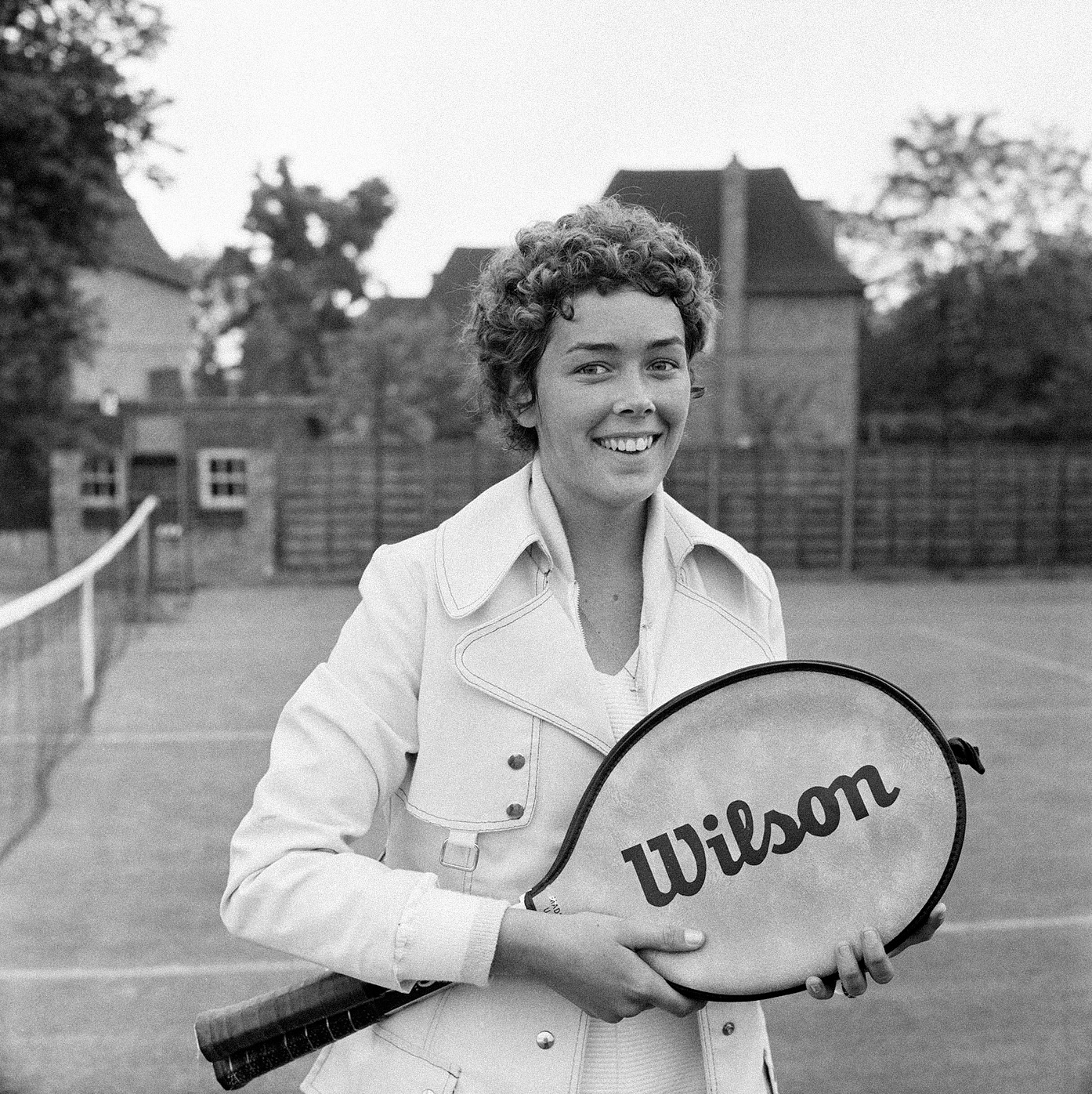
Tam O’Shaughnessy in London, 1971. // Getty
It’s as obvious as the moon in the night sky: Neil Armstrong’s pitch-perfect ode to “a small step for man” and a “giant leap for mankind” is on the short list of the greatest American quotes ever uttered. The brilliance in his poetic brevity will live forever, but he’s not the only astronaut to deliver a profound message from the heavens. For sheer out-of-this-world oddness, a new celestial laureate must be recognized: Dr. Sally K. Ride, America’s First Lady of Space. Gazing back at the home planet from the Challenger space shuttle, she points out the Himalayas and the coral reefs off Australia, notes how the stellar perspective has given her a deeper understanding of how fragile existence is, and then adds a beautiful note, equal parts Neil and Louis Armstrong.
You can look at Earth’s horizon, see this really thin royal blue line, and realize it’s Earth’s atmosphere. And that’s all there is of it. It’s about as thick as the fuzz on a tennis ball.
Given the monumental circumstances, it’s wild that Ride’s thoughts went to an expression that is not only not a cliché, but one that turns up exactly zero Google search returns. To come up with a “Fuzzy Dunlop” during that singular moment of awe shows how central tennis was to her life. It’s one of a handful of captivating throughlines thoroughly explored and dissected in Sally, a new documentary from filmmaker Cristina Costantini streaming on Disney and Hulu.
The heart and soul of Sally is Ride’s partner of 27 years, Tam O’Shaughnessy. They first met at a middle-school tennis tournament, reconnected around the time of the 1983 Cape Canaveral launch, and went on to cofound Sally Ride Science, a program of STEM education designed primarily for girls based out of UC San Diego. Sally is a queer love letter, but it doesn’t hold back on everything Ride sacrificed for her NASA career, including public acknowledgment of their relationship. It only came to light when O’Shaughnessy wrote Ride’s obituary following her 2012 death from pancreatic cancer. The push and pull of being a trailblazing public astronaut and a closeted private individual was never resolved and nearly did the couple in. As O’Shaughnessy says in the film, “It hurt me, but I’m not sure it hurt Sally. She didn’t care about such things.”
Be assured, though, neither Dr. Ride the person nor Sally the documentary is a downer for long. There are too many moments of sheer joy on the courts, in NASA trainings, orbiting the planet, and in tender moments between Sally and Tam—my personal favorite being the time they got all horned up and frisky looking at fungi under a laboratory microscope, culminating in O’Shaughnessy’s posthumous acceptance of Dr. Ride’s Presidential Medal of Freedom from Barack Obama, as the first woman to accept the award on behalf of her same-sex partner.
O’Shaughnessy, an award-winning children’s science author and educator, spoke to The Second Serve about her brief professional Virginia Slims career, her and Sally’s friendship with Billie Jean King, Ride’s bravery in the wake of the space shuttle tragedies, and the sun-kissed beauty of her young romantic tennis rival.
Let’s start with tennis. How did you get into the game, and how did your professional career go?
I grew up in Southern California in the ’60s, which was a golden era of tennis, with so many of the great players—men and women—playing and practicing at the Los Angeles Tennis Club and other area tournaments. I started at 10 and got to see up close what championship tennis looks like. I fell hard for the game, began playing rinky-dink junior tournaments, and just got better and better, which was the same for Sally. We first met as young girls on a boiling-hot day in a tennis tournament line. She was a highly skilled, fierce player.
At 13, I played in a doubles match with Billie Jean King, and she became my coach and our lifelong friend. I was nationally ranked as an amateur and decided to try the pros, which happened to coincide with this incredibly neat new thing, the Virginia Slims circuit. It was really hard making the jump. You think you’re a hotshot, and then everyone is so talented and athletic. I didn’t have a great career, but I was there, and I competed.
Any match or tournament that sticks out in your mind?
In 1972, I played both singles and doubles at Wimbledon. I lost early in both, so I’m not sure that counts as memorable. To get into Wimbledon, I had to go through a qualifier at the Roehampton Club in London, which had the worst grass courts on earth. It felt like running through a rolling series of moguls. I had to win three matches in three days, which was a crazy experience, but it got me in the main draw. I was so honored to set foot on the Wimbledon courts.
Looking back, what did you get out of your tennis years?
The thing about tennis and sports—or endeavors like music, art, dance, whatever—is it teaches you things you might not even necessarily be aware of. By zeroing in on tennis, I learned discipline, which was applicable to pursuits throughout my life. I also came to understand how important and generous good coaches are. As a kid, I was so lucky to learn from Billie Jean and Dr. Walter Johnson, who coached Althea Gibson and Arthur Ashe. He also founded the American Tennis Association’s junior development program back when the USTA wouldn’t allow Black kids to play. I played in a few ATA tournaments, which were so much fun. Dr. Johnson didn’t care where you came from, what your background was; all he wanted was tennis to be for everyone. The ATA was an impressive organization. Dr. Johnson was ahead of his time.
In Sally, you say the women on the Virginia Slims circuit were open-minded, and who you were dating or sleeping with was irrelevant. Given how early on in the gay rights movement it was, how important was that experience to you as a young woman?
Well, quite frankly, there weren’t that many queer women on the circuit—most players were straight. But because we had this common thing of tennis, which we were all trying to master against one another, it gave us a unified sense of purpose in many ways. We were also always together, practicing, traveling, going out to eat, etc. Nobody had an entourage or unlimited spending money, so we were a tight-knit bunch. In the early days, people got along, not that there weren’t fights and jealousies and all sorts of things.
Like, say, a Margaret Court?
Yes, every once in a while there was a Margaret Court type, but it was the exception. When I realized I was attracted to women, I felt like I didn’t have anything to really worry about on the circuit. It was a nice way to develop a sense of self as a young person.
In the documentary, Billie Jean King says that after she was outed in 1981, Ride saw the backlash, media storm, and loss of endorsements she faced and understandably decided to keep her true self locked away to not jeopardize her NASA standing. Do you think Sally would’ve done anything differently if she had had an experience similar to yours?
Sally grew up in a family that loved and encouraged her but never talked about personal things, ever. Being private was part of Sally’s nature; it didn’t really have to do with being an astronaut. I’m sure if she had been in the open, welcoming environment I found on the circuit, it would have helped shape her, but she kept our relationship private throughout, so I don’t know if anything would’ve gone differently. Over the years, there has been so much progress for the LGBTQ community, but Sally still died three years before gay marriage was legalized. The more these things moved forward, the more comfortable she felt. I think Sally would’ve gotten there. And I would have loved marrying her.
Can you explain how tennis helped Dr. Ride’s journey to space?
Sally would always say that one reason she was selected into the Astronaut Corps in 1978 was her tennis background. It was unique and set her apart from other applicants. Being so physically coordinated goes along well with being an astronaut. Specifically, her game helped her become talented and proficient in her abilities in operating the space shuttle’s robot arm. Once again, tennis provided future skills unrecognized at the time.
There’s a powerful section in Sally following the 1986 Challenger disaster, but there’s no mention of the 2003 Columbia explosion. I’m curious, was Sally’s reaction different the second time?
When Challenger exploded, Sally was completely crushed and numb, blown away that it happened, even though she was one of a handful of astronauts who truly understood the risks. President Reagan asked her to be on the investigation committee, and she played a pivotal role in the public questioning sessions of NASA leadership.
In the footage, she’s a bulldog.
You can see it in Sally’s face, how angry and upset she is. She held NASA’s feet to the fire. As we would all come to learn, NASA made huge mistakes because they got away from the culture of excellence that built the American space program. Sally believed that after the hearings, NASA solved the problems, going back to double-checking every checklist and having reams of data and evidence for making every decision. She was part of the investigation team after Columbia as well and was disillusioned to realize NASA had let the culture lapse, again. It was like leadership had collectively forgotten what happened to the Challenger.
Since you touched on it earlier, with all these aspects of the movie and your life currently under siege, how are you coping?
It’s a dangerous, miserable time. A lot of harm is being done across the board in our country, from immigration to science to education to, of course, the basic rights of human beings who are simply different from another type of person. It’s heartbreaking to me. I have to remind myself, American support for gay rights is around 70 percent, and in my lifetime, we’ve become a more socially just society that believes in the individual rights of other people. I think it’s imperative that institutions with a large platform and some level of power—be it universities, corporations, organizations like NASA, professional sports leagues, the Democratic Party, and so on—rise up, speak their truth, and stand against what’s going on. It’s normal, everyday American citizens who are most adversely affected. We need real leadership. It’s a hard thing to do, but it’s the only way forward.
Personally, I have to take frequent breaks from the news. This is where my love of sports helps. Athletes can be so encouraging, inspiring, and a positive reminder of what’s possible. The French Open has been a welcome respite from all the awfulness.
Let’s end on a happy note: In your mind’s eye, what do you see when I ask you to picture Sally Ride and Tam O’Shaughnessy out on the tennis court?
First off, I picture myself slender and fit again, with brown hair, so I like that. Mainly what I see is a warm, sunny California day out on a hard court, Sally on the other side of the net. She’s wearing some goofy baggy shorts and a white T-shirt. We’re hitting a ball back and forth until Sally starts being silly, rushing to the net and slamming a volley at my feet, just for the fun of it. We’re both laughing. It’s a wonderful scene.
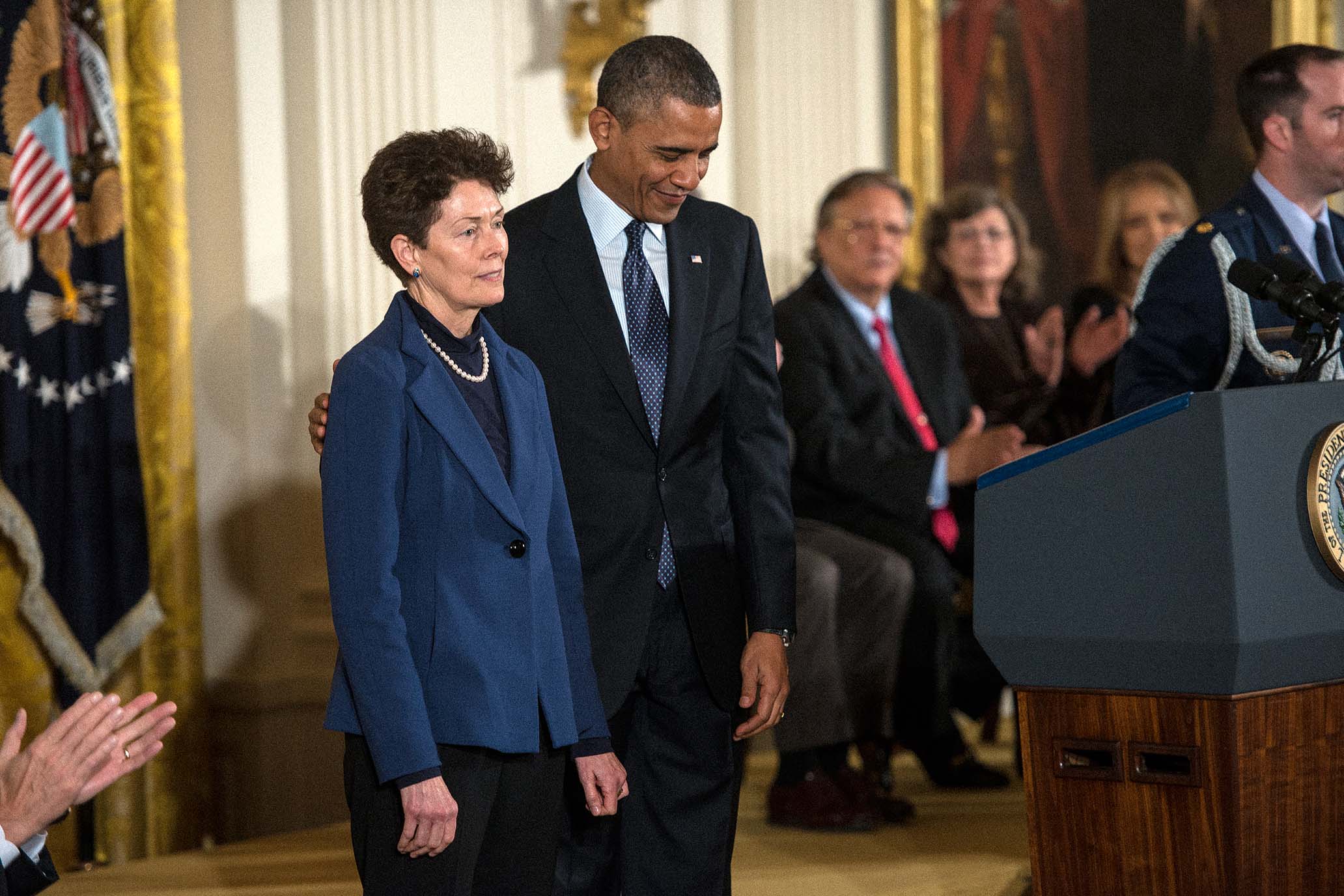
Tam O'Shaughnessy accepts the 2013 Presidential Medal of Freedom on behalf of her late partner, Sally Ride in 2013 in Washington, DC. // Getty.
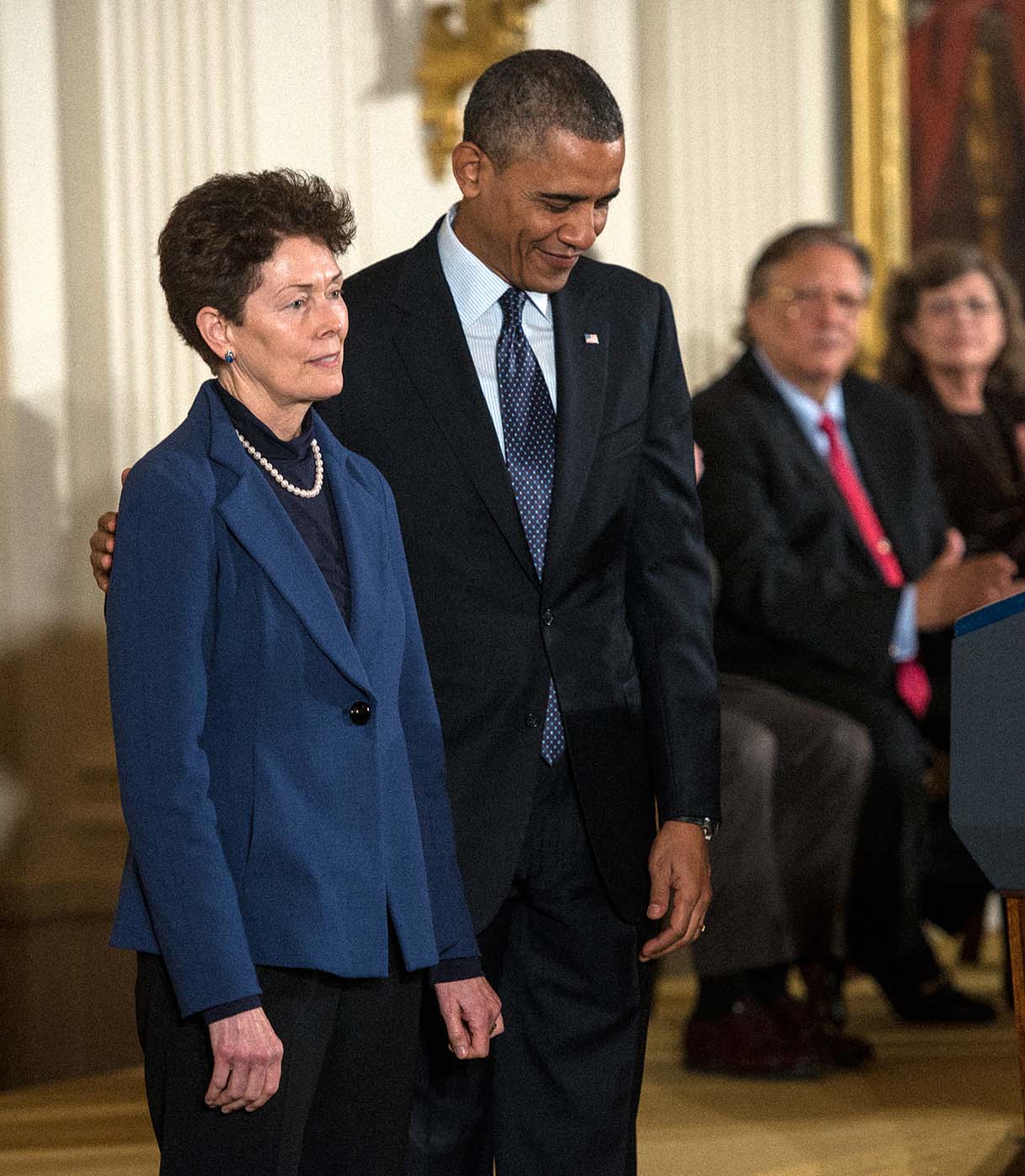
Tam O'Shaughnessy accepts the 2013 Presidential Medal of Freedom on behalf of her late partner, Sally Ride in 2013 in Washington, DC. // Getty

PURE, ORIGINAL TENNIS — SIGN UP!
Forces of Nature
Forces of Nature
Forces of Nature
Coco Gauff looks to continue to confound on grass.
Coco Gauff looks to continue to confound on grass.
By Giri Nathan
June 13, 2025
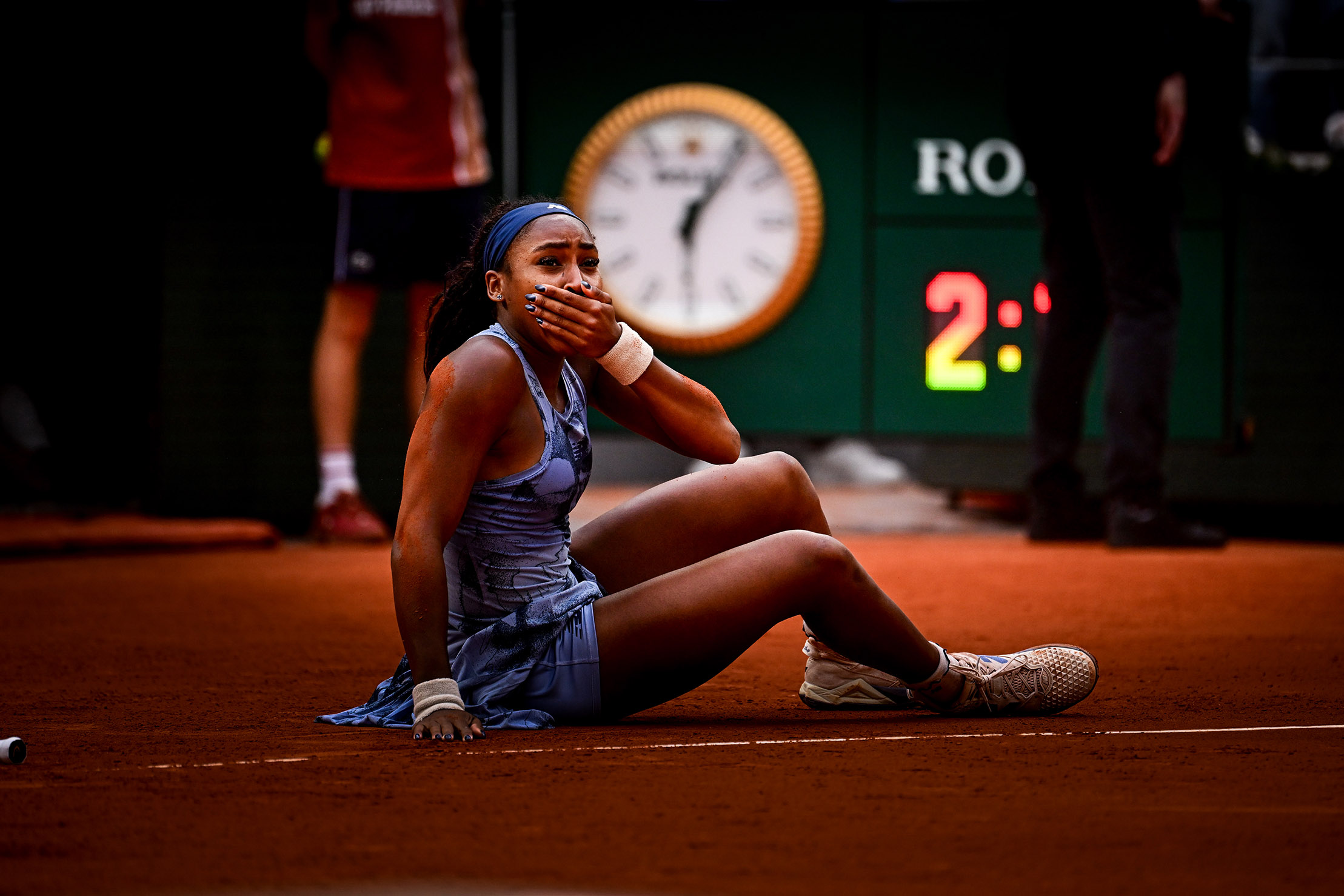
Coco Gauff celebrates her Roland-Garros victory. // Sandra Ruhaut, Getty
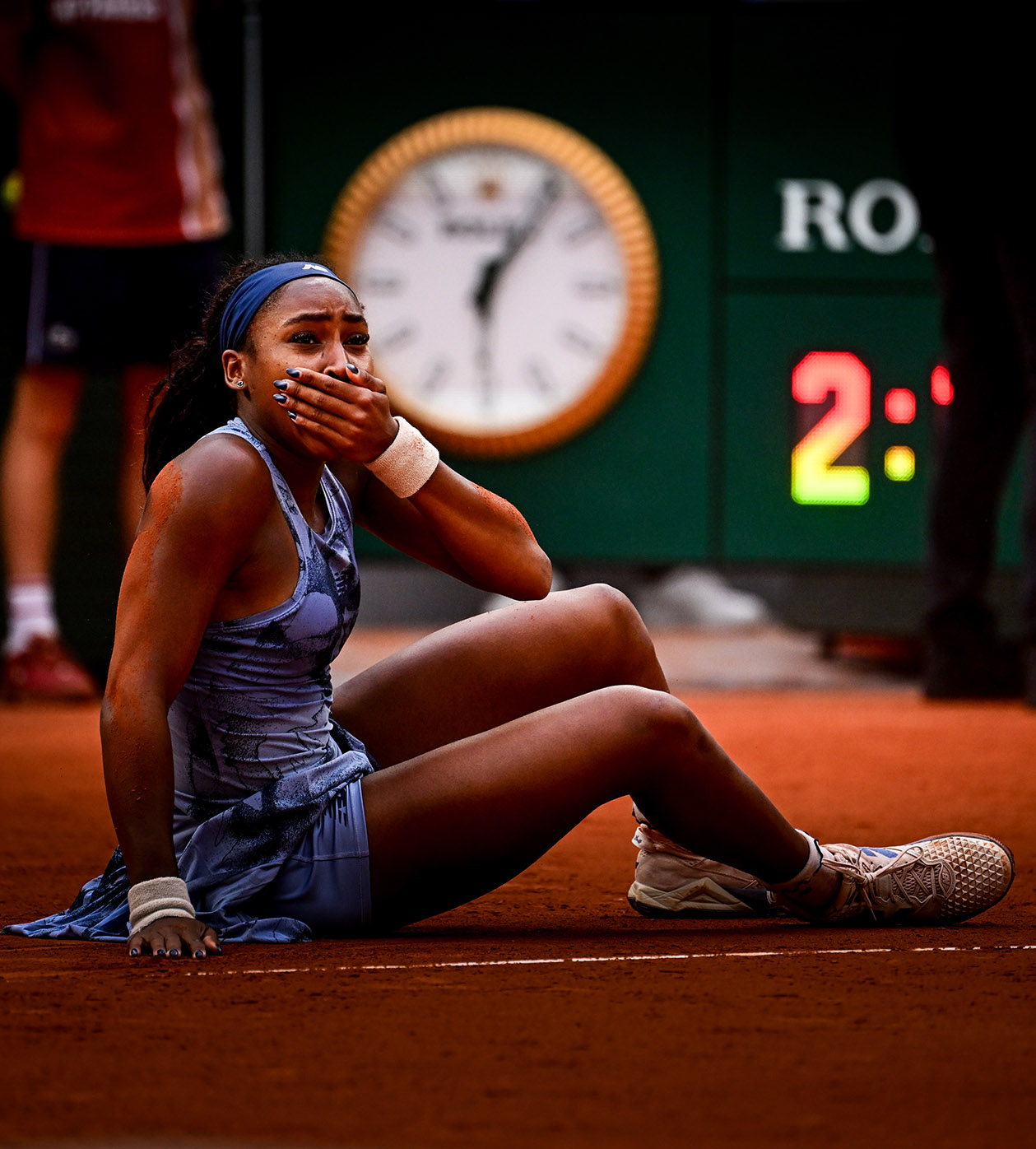
Coco Gauff celebrates her Roland-Garros victory. // Sandra Ruhaut, Getty
I recently had an eye exam where I had to peer into a device and press a button every single time a pinprick of light appeared anywhere in my field of vision. There were dozens and dozens of those lights flashing on and off, in rapid succession, each one easily identifiable in isolation. But the focus required to identify and respond to each of them, in a timely and accurate fashion, without any false alarms, was surprisingly taxing. I felt myself making the occasional error not because of my eyes—my eyes are working fine, it turned out—but because I was sleepy that day and struggling mightily to stay vigilant about every single pesky, tiny light peppering the field. It was frustrating. Even a little embarrassing. I now wonder if this is how No. 1 seed Aryna Sabalenka felt in her Roland-Garros final against No. 2 seed Coco Gauff on Saturday.
One line you hear often in tennis commentary is the idea that the “ball is on her racquet.” It is used to identify the aggressor in the matchup. The main character, even. She is the proactive player, and the opponent is reactive. She is the one determining her own fate. Every time the ball is sitting on her strings, the question is whether that swing will produce a winner or an error. It’s as though this two-player game has been reduced to the will of a single player. To me the most “ball is on her racquet” matchup in all of tennis is Sabalenka vs. Gauff. It is a match of peerless offense against peerless defense. And this time, just as it did in the 2023 US Open final, defense survived an initial onslaught from offense and then slowly took control of the match. By the end, offense looked hopeless and dysfunctional.
Sabalenka ended the match with just 37 winners to go with her 70 unforced errors. Afterward she seemed to locate the reason for the loss entirely within her own tennis, as if Gauff were just an incidental feature of the match, like a passing cloud. To hear Sabalenka tell it, the wind was a more significant adversary during the final than the human who was the tournament’s No. 2 seed. Sabalenka described herself as “terrible.” She said that Gauff had won the match by “running and playing those high balls from the frame”—shanking the ball, in other words. She also said that Gauff didn’t play all that well: “I think she won the match not because she played incredible; just because I made all of those mistakes from—like, if you look from the outside, kind of like from easy balls.” A day later, she issued a written apology on Instagram.
Personally I enjoy the occasional press conference delivered in the throes of post-match emotion, with plenty of self-flagellation and without much attention paid to etiquette, but these remarks sure did inspire a lot of Discourse. There was the age-old debate about the arbitrary line between “forced” and “unforced” errors; there was a lot of outrage on behalf of the Roland-Garros champion. Here, as always, Gauff has appeared several decades wiser and calmer than everyone doing said Discourse, calmly batting away the various comments from Aryna that were relayed to her. And to take it into pure tennis terms, if I were Coco, I’d be thrilled to learn that the adversary I’d beaten in two Slam finals still hadn’t quite pieced together how I’d done it. That means it could still work again.
In the 2023 US Open final I saw how Gauff’s scrambling defense seemed to shrink the court for Sabalenka. Challenged to keep hitting two or three extra shots in every rally, the mental fatigue accumulated. Sabalenka’s power tennis, which can be flighty even in the best of circumstances, went utterly haywire. It’s not an accident that the match played out this same way in Paris, too. It was by design. You could take my word for it, or you could listen to someone who once lost to a 15-year-old Gauff and has wonderfully articulated what makes her so dangerous. Here’s a bit from Andrea Petkovic’s lovely description of the way Gauff takes away time and space from her opponents: “The unforced errors hit by Coco’s opponents when she’s playing well are actually forced,” she writes. “Except, they are not forced by Coco’s previous shot (which is what usually goes into the forced error statistics) but they are forced by the entirety of her game and presence on the other side of the net and by choices she has made 20 minutes prior to the point of you netting a forehand.”
While I was watching Gauff force these dozens of errors with her consistency, I remembered that the longtime stereotype of American tennis is serve-and-forehand bashers who favor hard courts. And yet, the best American of this generation is a player whose serve and forehand are her most commonly discussed liabilities. And she was winning at the highest level on clay, with sheer court coverage and a sublime backhand. American tennis: not a monolith! Given Gauff’s athletic gifts, her speed and endurance, clay would seem the best surface for her. She might have gotten to this Roland-Garros title sooner were it not for the perennial dominance of Iga Swiatek, who ended her run at this tournament for the past three seasons in a row. Regardless, she finally made good on the prophecy she wrote into her Notes app in 2021: “I had a dream last night that I will win french open.”
Now Gauff moves toward Wimbledon, the one Slam where she has yet to advance past the fourth round, a stage she first reached as a 15-year-old, making her name for the first time. And though she would probably not self-identify as an enthusiast of grass courts, she does have the third-highest win rate on grass among current top 10 players, and the tour’s second-highest grass-specific Elo rating, according to Tennis Abstract. And Wimbledon has been a bit of a free-for-all in recent years. So why not Coco? Maybe she’ll pull it off and then reveal the Post-it note from 2015 predicting it would happen.

PURE, ORIGINAL TENNIS — SIGN UP!
The Final Confessional
The Final Confessional
The Final Confessional
Roscoe Tanner Seeks Redemption.
Roscoe Tanner Seeks Redemption.
By Joel Drucker
June 13 2025
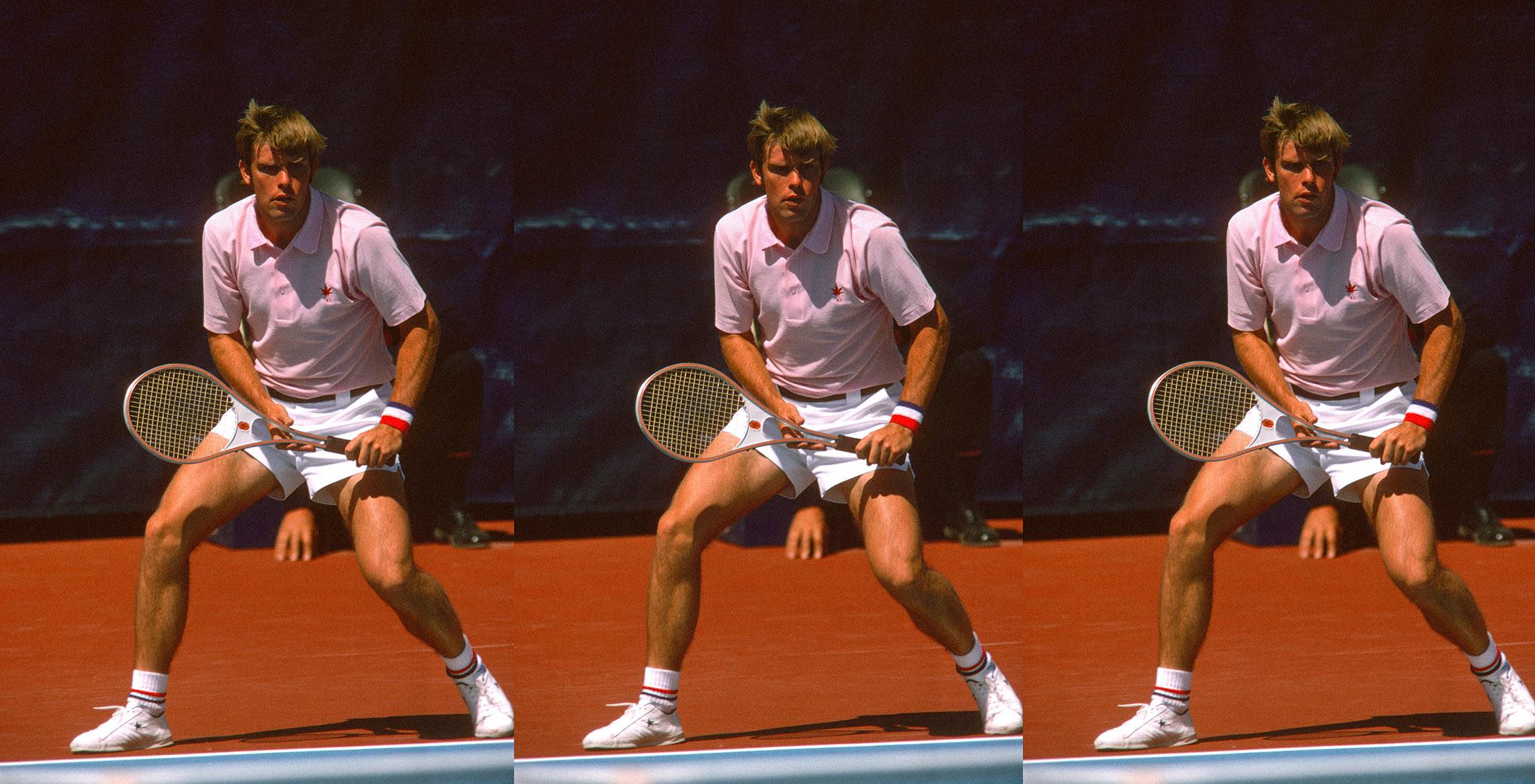
Roscoe Tanner at the American Airlines Tennis Games, Tucson, AZ, 1975.
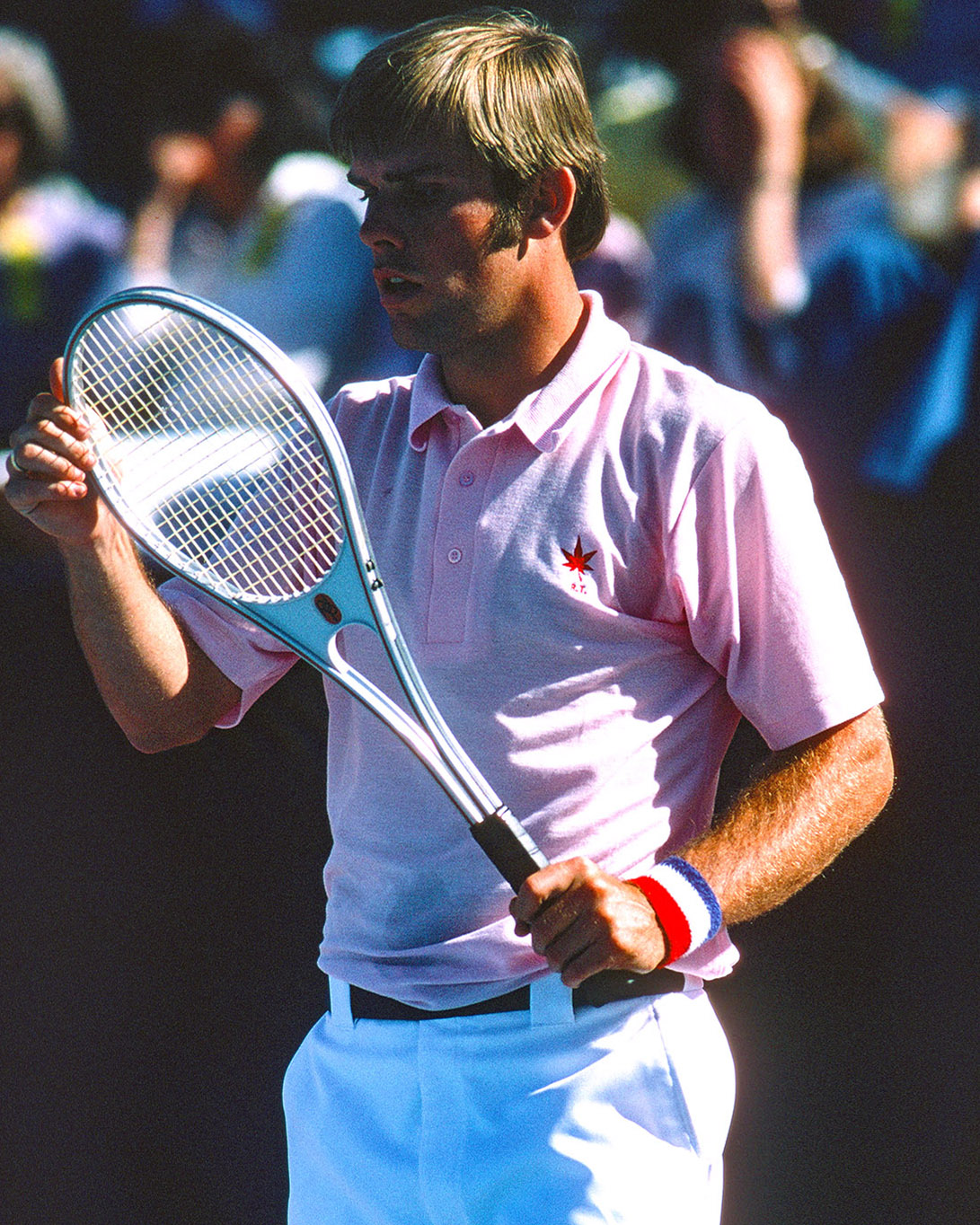
Roscoe Tanner at the American Airlines Tennis Games, Tucson, AZ, 1975.
Father’s Day promises to be a busy day for Roscoe Tanner. There’s a good chance he’ll go to the church he attends near his home in Orlando. Tanner might also spend time on the tennis courts of several facilities he teaches at roughly 15 hours a week. Perhaps he’ll show a foursome of beginners the fundamentals of doubles. Or help a college player understand the nuances of the serve-volley tactic that took Tanner to a career-high ranking of fourth in the world. And maybe one student will seek to mimic Tanner’s whiplike, left-handed service motion that was once clocked at 153 mph.
But Tanner’s greatest joy on Father’s Day will come from contact with his five daughters—Lauren, Tamara, Anne Monique, Omega, and Lacey. Five women from four mothers, all the children at last on good terms with a man who for decades neglected his spousal and parental responsibilities in ways no one would dare wish upon anyone. From missed child-support payments to bounced checks to multiple jail terms, Tanner has both inflicted pain and paid a heavy price for a series of horrendous choices. He knows this, too, and is now keen to publicly make amends. One step forward: the publication of Tanner’s memoir Second Serve: My Fall From Grace and Road to Reconciliation. “What you’re about to read,” writes Stan Smith in the introduction to Second Serve, “is a brutally honest account of a celebrity athlete who experienced the riches of the world—only to see everything evaporate in his hands.”
“I made some selfish choices,” Tanner told me. “There’s no other way to put it. But I paid for that, and now I’m really lucky that that’s behind me.”
If this sounds familiar, that’s because it is. Twenty years ago, Tanner attempted a similar reinvention. Then, too, there was a book, that one titled Double Fault: My Rise and Fall, and My Road Back. But soon after, Tanner relapsed and was once again arrested. “I don’t want to go through a blow-by-blow description of the last fifteen-plus years of my life,” he writes in Second Serve. “You can do an online search if you’re so inclined.” Estimated to have roughly 30 percent new material, Second Serve addresses Tanner’s desire to live peacefully and ethically. “Some people learn about faith with a nudge, other people get it with a sledgehammer,” said Tanner. “I think I’m closer to the sledgehammer.”
Those who’ve known Tanner for years, some back to childhood days playing in junior tournaments, speak of him mostly with confusion and concern, largely because they have such fond memories of the confident and well-behaved competitor he’d always been. According to former top tenner Brian Gottfried, a Tanner tennis mate since their days as preteens in the early ’60s, “Whenever you played Roscoe, it was always fair and square.”
The world saw the swashbuckling Tanner, too, and never more gloriously than on July 7, 1979, when he entered Centre Court to play the Wimbledon singles final. A heavy underdog versus three-time defending champion Bjorn Borg, Tanner competed brilliantly, jumping off to a two-sets-to-one lead before eventually succumbing, 6–4 in the fifth. It was a first-rate showcase of a man who’d thrown himself into the arena and also emerged triumphant for his effort. As a postscript, Tanner defeated Borg in the quarterfinals of that year’s US Open.
Alas, as graciously as Tanner conducted himself inside the lines, temptation beckoned and captured. “But away from the court,” he writes, “I cheated on [his first wife] Nancy with abandon…. I needed the comfort of a warm embrace. The tour was a lonely place where wolves were looking to devour lambs on the court.” While surely not the first athlete to commit adultery, after his playing career ended, Tanner overextended himself beyond belief, triggering a cascade of financial troubles that in time led to his arrest and imprisonment.
As a player, Tanner could always put setbacks behind him and march forward with his own brand of focus and confidence. “The glass was always overflowing for Roscoe,” said Dick Gould, his coach at Stanford. Tanner, though, recognizes that the laser-like focus that helped him win so many matches wasn’t always so effective elsewhere. “But when you transfer that stubbornness into different things that you think you can get done outside the tennis world,” he said, “it doesn’t necessarily work properly.”
Documenting his time served in a German prison, Tanner writes, “They say that a person can live thirty days without food, three days without water, three minutes without air, but only thirty seconds without hope.” Having bottomed out in prison, Tanner surrendered to a higher power. As he writes, “I leaned over my bed and clasped my hands. ‘Dear Lord,’ I began, ‘I’ve done so many wrongs that I don’t know where to begin. I want you to know that I’m sorry for what my life has become. I repent of my sins and ask you to come into my life now.’”
Tanner writes that, “I’m now in a place where I’m content doing my thing—giving lessons, coaching players, and imparting advice about a game that I’ve loved since I was a little boy.” The same week I read Second Serve, I watched the movie Catch Me if You Can. This is the tale of Frank Abagnale Jr. In his youth, Abagnale forged dozens of checks before being caught by the FBI, imprisoned, and, eventually, hired by the FBI. Who better to detect a forger than a forger?
As I pondered Tanner’s fate, I wondered if, akin to Abagnale, he might find meaning as a source of counsel for youngsters about to embark on the pro tennis journey, active pros faced with many hedonistic options, ex-players uncertain of the next best step. For the sport is filled with dozens of these solitary souls who create pain not just for themselves, but sometimes also for others. And while forgiveness can be granted with words, trust is rebuilt best by deeds.
A common trope is to compare tennis to democracy: a fair form of competition, all outcomes based strictly on the ability of an individual to effectively perform. But there is also a downside to such a singular community. In the 1830s, a Frenchman diplomat named Alexis de Tocqueville came to America. Ironically enough given the case of Tanner, Tocqueville’s nominal mission was to study the American prison system. But his bigger quest—less than 50 years after his homeland’s own revolution—was to understand how democracy played out in this former British colony.
Though tennis as we know it had yet to be invented, Tocqueville anticipated what Tanner must have felt during those many solitary days and nights he spent competing all over the world and then returning to his hotel room. Writing in his iconic book Democracy in America, Tocqueville noted that, “Thus not only does democracy make every man forget his ancestors, but it hides his descendants and separates his contemporaries from him; it throws him back forever upon himself alone and threatens in the end to confine him entirely within the solitude of his own heart.”
“I’ve made some mistakes,” said Tanner. “I paid for it, but let’s all learn from it and go forward.” Now 73 years old, Tanner continues his quest to liberate himself from solitude and cultivate love with the many hearts he shattered and is working earnestly to mend. “I missed a lot of time with them,” Tanner said about his daughters. “On the other hand, I prefer to think about where I am right now, and I’m in a good position with each of them.” On this Father’s Day, light a candle and hope that Roscoe Tanner has indeed authored his final confessional.

PURE, ORIGINAL TENNIS — SIGN UP!
Back In Black
Back In Black
Back In Black
Jannik Sinner picks up where he left off.
Jannik Sinner picks up where he left off.
By Giri Nathan
June 6, 2025
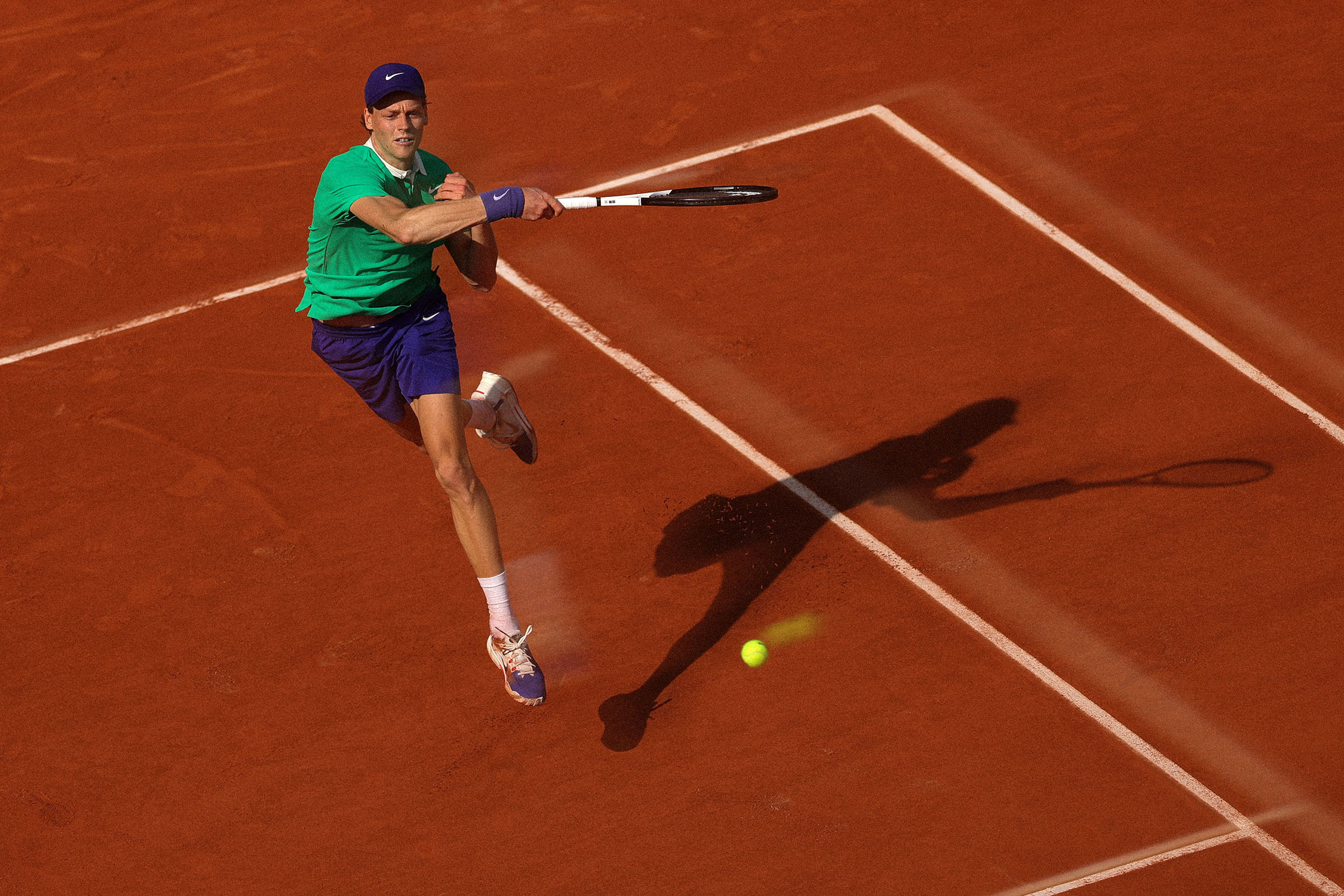
Jannik Sinner channels the Official Preppy Handbook during his 2025 Roland-Garros campaign. // Getty
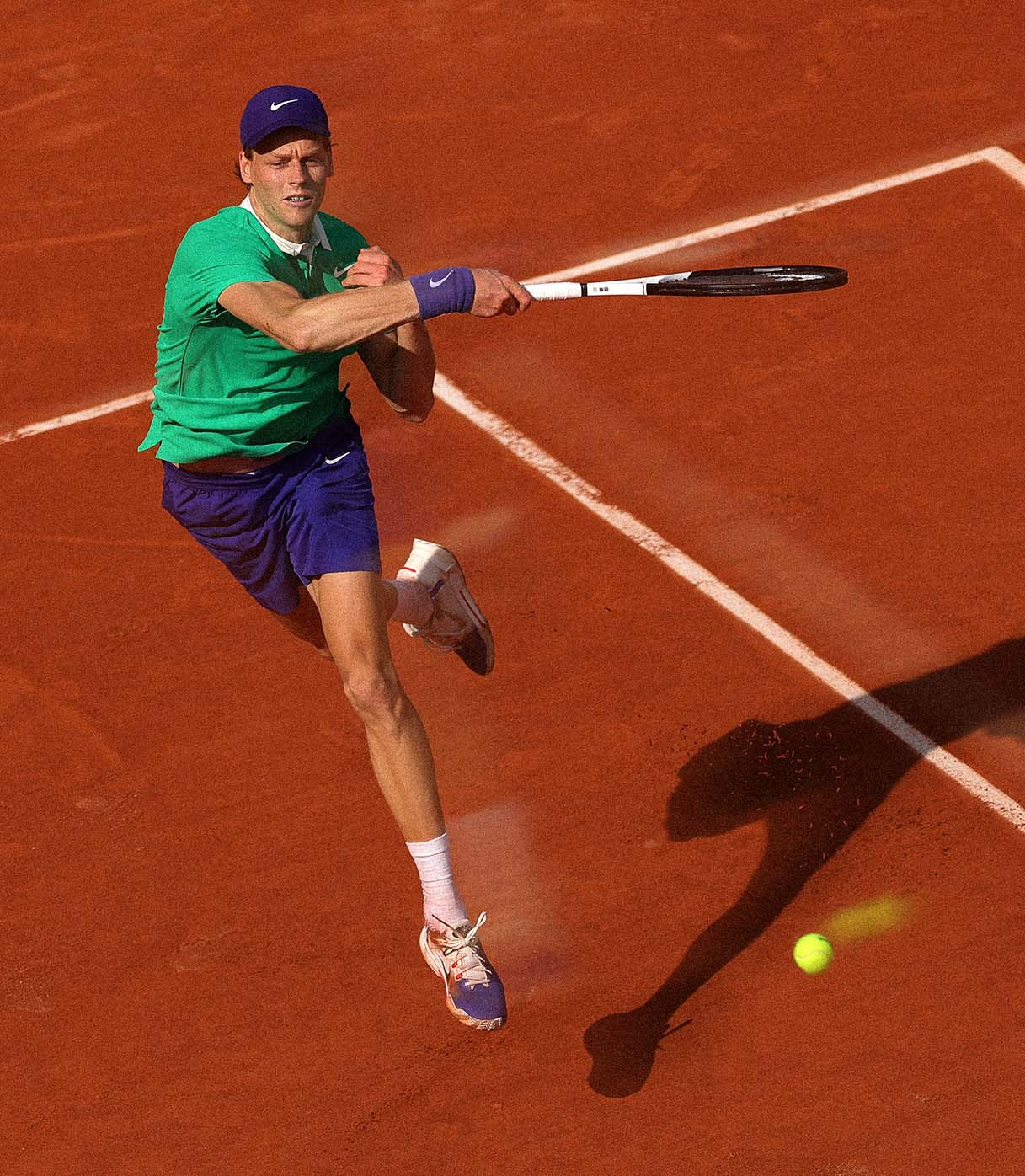
Jannik Sinner channels the Official Preppy Handbook during his 2025 Roland-Garros campaign. // Getty
Jannik Sinner didn’t even want to accept a settlement. Throughout his doping saga, the No. 1 player in the world has proclaimed his innocence. He has said that he took all necessary precautions, and it was only due to the neglect of his support staff that he ended up with the anabolic steroid clostebol in his system. You probably know the story by now, but here’s a reminder of the colorful details. He maintains that his physiotherapist treated a wound on his own finger using a topical spray that contained clostebol; the physiotherapist used that same hand to give Sinner massages; the clostebol got into Sinner’s bloodstream via tiny sores on the player’s skin. The World Anti-Doping Agency, however, sought a ban of one to two years. In the end, Sinner’s legal team convinced the player that it was worth accepting a settlement instead of going back to court, prolonging the process, and risking a much longer ban. And so Jannik, who had just won the Australian Open, took the deal and sat out a three-month chunk of the 2025 season.
It was a convenient chunk of the season, in that Sinner missed no major tournaments, and the first event upon his return to tour would be Rome, where he would enjoy the raucous support of his home crowd. But the suspension was also a profoundly strange time in his life. For the first two months of his suspension, Sinner was subject to strict restrictions on what he could do and where he could appear—even as a mere fan. Though he wanted to spend some of his downtime watching his friends compete in motocross and cycling, he learned he was not even allowed to attend official sporting events. As for tennis, he could not train on courts that were associated with the professional tour, or with any national tennis federation, ruling out pretty much all of his usual haunts. He had to seek out private facilities. He also could not train with any active professional players. But like any tennis player, he had to find a suitable partner. Suddenly the world’s top player was in the same conundrum as a weekend warrior looking for a decent hit.
As it turned out, Sinner had received a message from an old acquaintance: Roberto Marcora, the former world No. 150, who is 12 years his elder and long gone from the tour. Marcora half-jokingly offered his services as a sparring partner. Soon enough, Sinner’s team reached out to him, and they weren’t joking at all. Marcora’s name had to be submitted to WADA for official approval. Because he’d last played professionally at Indian Wells in 2023, Marcora was deemed inactive by the authorities, and they were good to go. In an interview with TennisTalker, Marcora described hitting with an even more advanced version of the kid who had already beaten him in a Challenger final back when Jannik was 17. He said it felt like practicing with Djokovic, but with more power.
After April 13, some of the suspension restrictions were relaxed. Sinner could train with his old pals again. A few days later he was seen hitting with Jack Draper, who was in the midst of a breakout season. The following week, Draper blazed to the final in Madrid, but Sinner was still watching the tour from afar. He made his official return to competition in Rome. In a press conference before the tournament, Sinner did something that shocked me more than any drug test results could. This strenuously private man offered an unprompted update on his romantic life. He’d recently been photographed with the model Lara Lieto, but he took a moment to assure the assembled press that he was in fact single and ready to mingle: “I was also very surprised to see some pictures, which—nothing serious, let’s say it like this: I’m not in a relationship.” Had someone taken our robotic, reticent Jannik and replaced him with this grinning playboy? Or perhaps he was just feeling a lot freer with the doping stress behind him.
Back on court, Sinner picked up right where he left off: beating everyone in sight. It looked as though the stringent limits of his suspension hadn’t detracted much from his game. He murdered his opponents in a tennis-goth, all-black outfit. “I believe it suits me quite well. I like not the yellow and orange and these very bright colors. I like more the darker colors,” he remarked—a clear contrast to his foil Carlos Alcaraz, who often opts for candy-colored kits. On one of his off days during the tournament, Sinner slipped into a dark suit and went to the Vatican to meet the newly named Pope Leo XIV, who loves to play and watch tennis. Sinner gave him a racquet as a gift and offered to volley a bit. The Pope looked around at all the precious objects in the room and decided against it.
The following day, the post-pope Sinner administered a 6–0, 6–1 beatdown to Casper Ruud, the sort of rout you rarely see between two top 10 players. Sinner was so comically, excessively good that Ruud described his play as “next-level shit” and admitted it was “almost fun to witness.” At this point I began to wonder if the three months of rest had in fact given Sinner a leg up on the competition. My speculation cooled off two rounds later, in the final, against Alcaraz, who had dominated the clay season up to that point. This was the most narratively satisfying way for Sinner to return to the tour: a title fight against his archrival, on Alcaraz’s best surface. Sinner stayed neck and neck in the first set, earning himself set points, only to let them slip away. He faded out quickly in the second set. That made four consecutive losses to Alcaraz since the start of 2024. Sinner had suffered only three other losses to the whole rest of the tour during that same span. But he appeared quite happy and relaxed after the match. After all, this was arguably the most challenging test in tennis, and he left it realizing he was “closer than expected” to his goal, despite all that time in exile.
In his runner-up remarks, Sinner paid Alcaraz a compliment: He would be the favorite at Roland-Garros. As we approach the tournament’s last weekend, that may still be true. Alcaraz has lost some sets here and there, but his peak level, seen in his last two rounds against Ben Shelton and Tommy Paul, has been astounding. Sinner, meanwhile, hasn’t dropped a single set through five matches and is barely losing games as of late. They are the No. 1 and No. 2 seeds, sitting on opposite sides of the draw, and they might finally meet in a major final. They have been hurtling toward such a match for quite some time, and it is the most appealing prospect in men’s tennis, though having just spent way too much time thinking about these two dudes, I’m quite biased. The dream final might be just a few days away…unless Novak Djokovic interferes with the proceedings.

PURE, ORIGINAL TENNIS — SIGN UP!
The Devil in the Details
The Devil Is In the Details
The Devil Is In the Details
“To see that your player is improving gives sense to your job,” says Pere Riba, Zheng Qinwen’s coach
“To see that your player is improving gives sense to your job,” says Pere Riba, Zheng Qinwen’s coach
By Carole Bouchard
Jun 2, 2025

Pere Riba pictured at Roland-Garros this year with his charge, Zheng Qinwen. // Getty
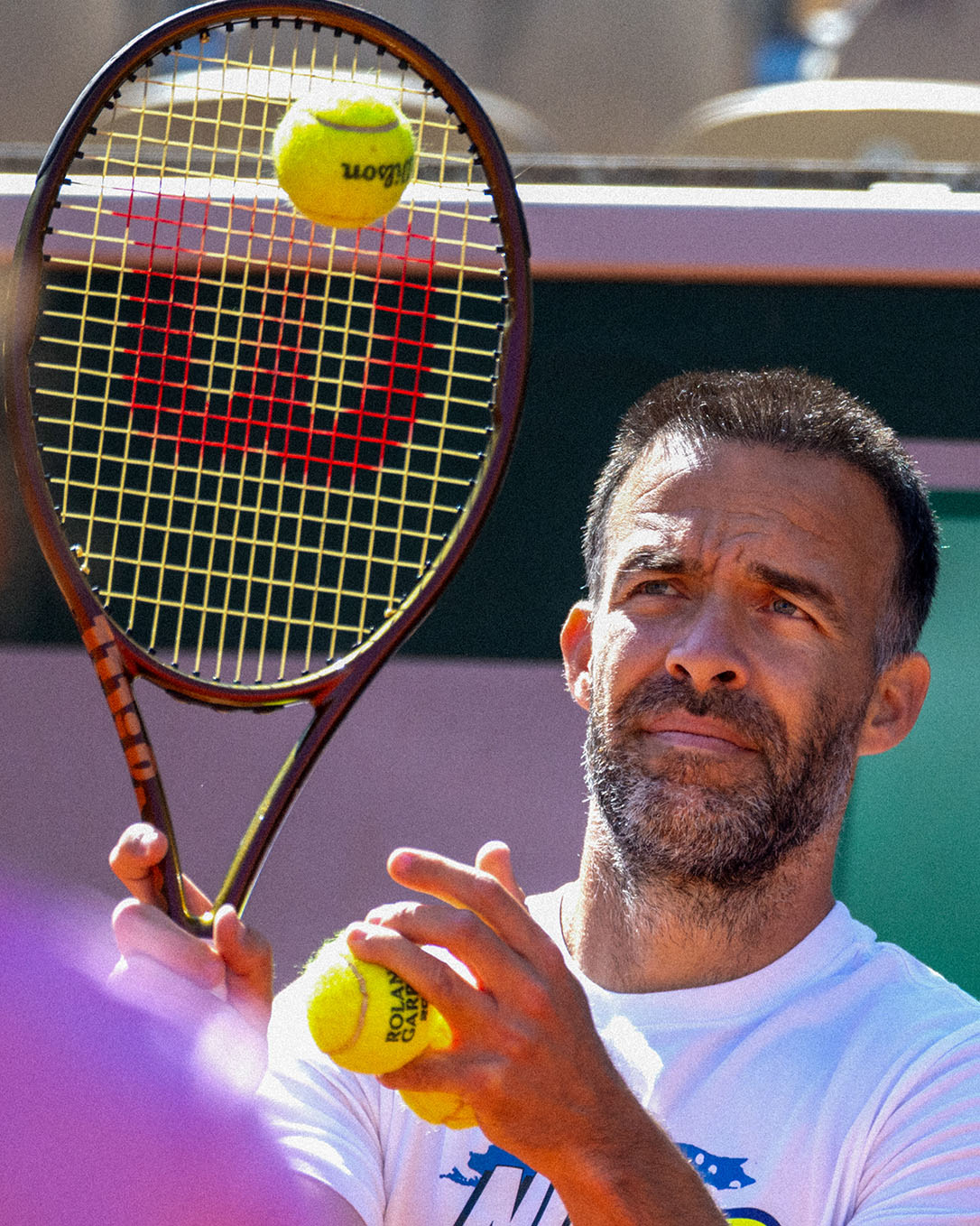
Pere Riba pictured at Roland-Garros this year with his charge, Zheng Qinwen. // Getty
Pere Riba has been working with Zheng Qinwen since she was 18, bringing her to the top 10, a final at the Australian Open in 2024, as well as a gold medal at the Olympics and the finals of the WTA’s year-end championship tournament. In 2023, he was on the team that helped Coco Gauff win the US Open. If there’s someone who knows how to develop a top player’s game, it’s the Spaniard. Carole Bouchard caught up with him at Roland-Garros, where talk of Zheng’s evolution had him all smiles.
Qinwen said that she felt it was time to add things to her game this year, such as coming to the net and hitting drop shots. How did you work on developing her game?
You must always be ready to learn. [At 22, she] is still really young and has a big margin of improvement. If there are things you don’t have in your game or things you have but that need to be improved, you need to do it. It’s always the moment to add things. Of course, she is already one of the best players in the world, and she has amazing potential, but you still have to work on these small details. You want to make the player more complete, because the more tools they have, the easier it is to find a way to win the matches.
It’s challenging to find time to work on the game during the season. How do you manage it?
Yes, well, at least you have a good moment in the preseason to make these changes. But even during the season, you have to choose well to find training blocks. It’s getting tricky nowadays because of the WTA 1000s that are held over two weeks, so you really have to plan well. You need the training blocks to make these little changes happen. Then if you don’t have them, you can also use practice sessions. You set goals. You always ensure that you find an intention in the practice. That is really important to avoid going to the court and then just hitting for the sake of hitting. Of course, you have to do the basics, but then you must find the why. That’s how the player goes to the court with the mindset of, “I want to improve that part of my game.”
I don’t believe in being limited by age in some way. Of course, when they are younger, they can listen a little bit more, but I believe that you can always improve. It doesn’t matter the age—24, 25, 26, 30, or 35—you can always improve. We have the examples of Roger Federer, Novak Djokovic, and Rafael Nadal to prove it. When you see that this can happen—because they did—then why not others? Women’s tennis is the same. They have to be open to improving all the time, and it doesn’t matter if you are No. 1, No. 5, or if you have won a Grand Slam title. You must be open to the idea of continuing to improve, because if not, others will.
Is it easier with Zheng because she is so ambitious and dedicated?
She is truly open to improvement and change. Especially when she believes in it and when she sees that it’s so obvious. I understand that when the player is growing, when the player is getting better, especially in the rankings, sometimes you can doubt about making changes. Everything is working well, right? Everything you are doing is working, and you’re winning a lot of matches; everything seems fine. Yet there are still small things to improve. You must understand that if you improve, you will become a better player and have a greater chance of winning big events, especially when you are young.
It’s a big responsibility when your player is already in the top 10, having played a Grand Slam final and won the gold at the Olympics…
Yes, it is. But in the end, you have to aim as high as you can. In my opinion, she has to aim to be No. 1 and win Slams. If you want to win these events and be at the top, then the process requires these improvements.
I saw her at the net here, and I was like, “Oh, that’s new!”
She’s going more to the net, she’s doing drop shots, she’s opening the court more, she’s serving much better. And still, she can improve many things. But I’m really happy because for a coach to see that your player is improving gives sense to your job. Every year I watch her, she becomes a better player. Results are another thing because sometimes you can do things well and then have one bad day. However, if you take a global look at the work done over the years, you can see that every year she has been better than the previous one. I have a lot of faith in her.
Did you already have a vision for a game early in your collaboration?
I met her when she was 18. I remember that she was ranked 180 and came from juniors. I saw huge potential, but at that moment, it was a different thing: She had good potential on the shot, but there was something in her game patterns that needed work. I love the process that she went through, and you can now see it in the way she uses her heavy forehand. Now she goes to the court, and she so clearly knows the patterns and what she has to do. Now she’s playing with sense. She knows when to attack and when she has to defend. Of course, she needs to improve a lot because everyone can improve, but I’m so happy with the process, seeing how far she’s come since her junior days. It makes me happy to see how she has evolved and how she continues to evolve.
Long-term work is the only thing that can work…
Well, these days it’s not easy to find because young generations don’t have the patience. They want to succeed right now. But they have to believe in that process and show a little bit of patience during the work, even when the result isn’t coming at the moment they’d have wanted it to. You need to allow time for the process you are undertaking, as things will work out in the long term if you do it correctly. It’s going to come.

PURE, ORIGINAL TENNIS — SIGN UP!
Mozart's Outro
Mozart's Outro
Mozart's Outro
Richard Gasquet calls it a career.
Richard Gasquet calls it a career.
Giri Nathan
May 30, 2025
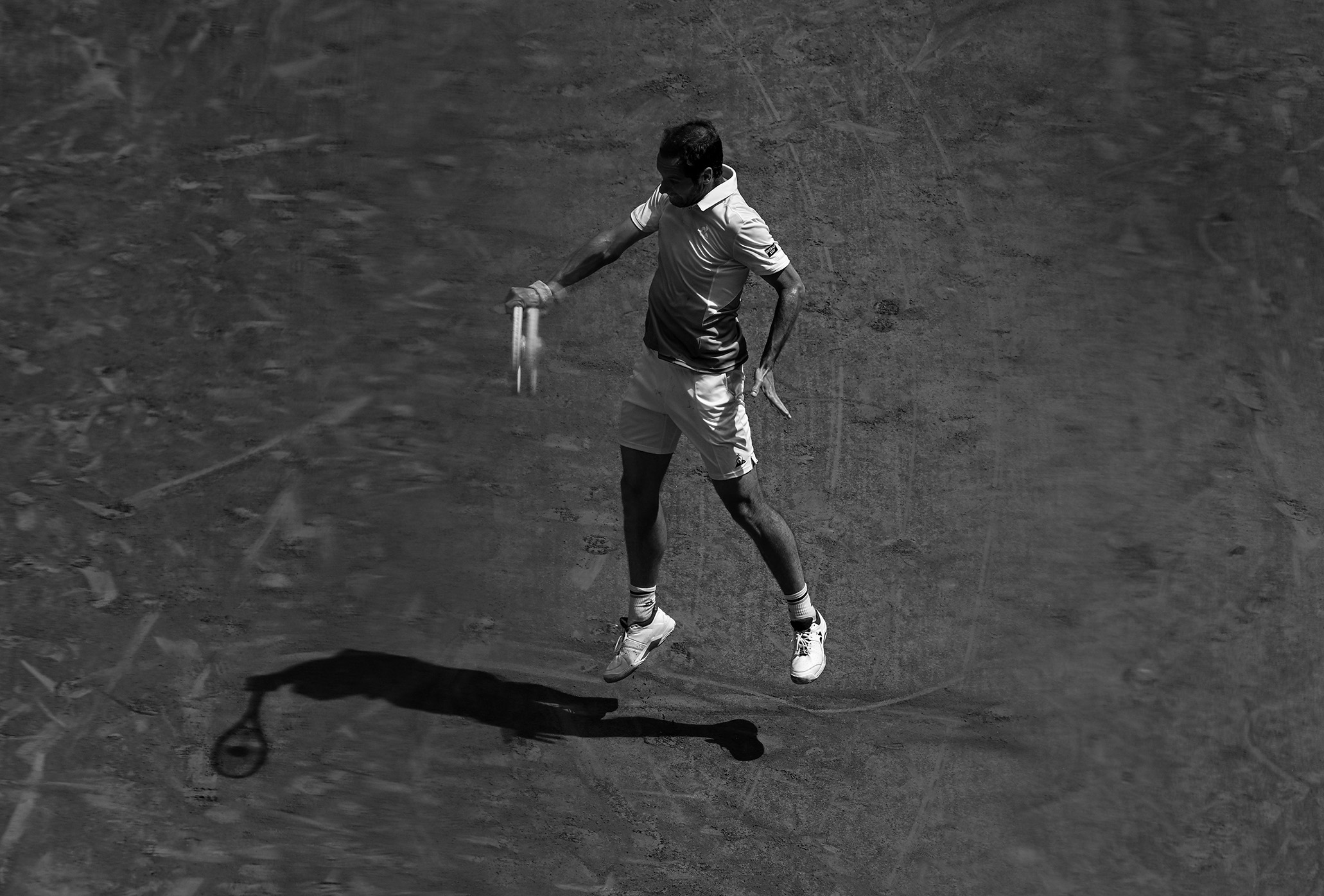
Richard Gasquet's legendary backhand on display during his final appearance at Roland-Garros. // Sandra Ruhaut/Getty

Richard Gasquet's legendary backhand on display during his final appearance at Roland-Garros. // Sandra Ruhaut/Getty
Anonymity might have suited Richard Gasquet better, but he never had a chance to try it. By age 9 he was pictured on the cover of Tennis Magazine in his native France. Young Richard was depicted in tennis whites, about to strike the one-handed backhand that would win him many hearts over the decades to come. Next to his photo was a burdensome headline: The champion that France awaits? At age 12, he took on his peer Rafa Nadal at Les Petits As, an elite junior tournament. The footage of their 1999 quarterfinal is very cute and well-known among tennis junkies; Gasquet prevailed in three sets and went on to win the title. It seemed as though he and Nadal would be evenly matched rivals. When Gasquet was 15, the president of the French Tennis Federation dubbed him the “Mozart of tennis.” By age 16, he had become the No. 1 junior in the world.
France, suffering from a major title drought, supercharged young Gasquet with hype before he’d even ventured onto the pro tour. Later he’d recall that this wasn’t a pleasant experience. “It’s the only thing I regret about my career, that when I was a child, I felt a lot of pressure to play, to practice, really a lot of expectation on my shoulders,” the 38-year-old told The Observer recently. “Everyone wants you to win, so you feel it. Sometimes I felt it a little bit too much.”
On Thursday, in the second round of Roland-Garros, Gasquet concluded his tennis career—a humane ending, painless straight sets, courtesy of the No. 1 seed Jannik Sinner. Now that we have arrived on the other side of Gasquet’s 22-year career, we can see it for what it really was: an impressively long and frequently brilliant effort while coexisting with the toughest competition in ATP history. His highs were high. Gasquet upset Roger Federer at age 18. He had won titles on every surface by the time he was 21. He made three Slam semifinal appearances; in each case he lost resoundingly to a member of the Big Three. He enjoyed two stints in the top 10, first in 2007 and again in 2015. He offered one of the most memorable ever excuses for failing a drug test (went to a nightclub and kissed someone who had used cocaine). He played more than 1,000 matches, incredibly, and won 16 tour-level titles in all, including one unlikely late-career triumph at Auckland in 2023.
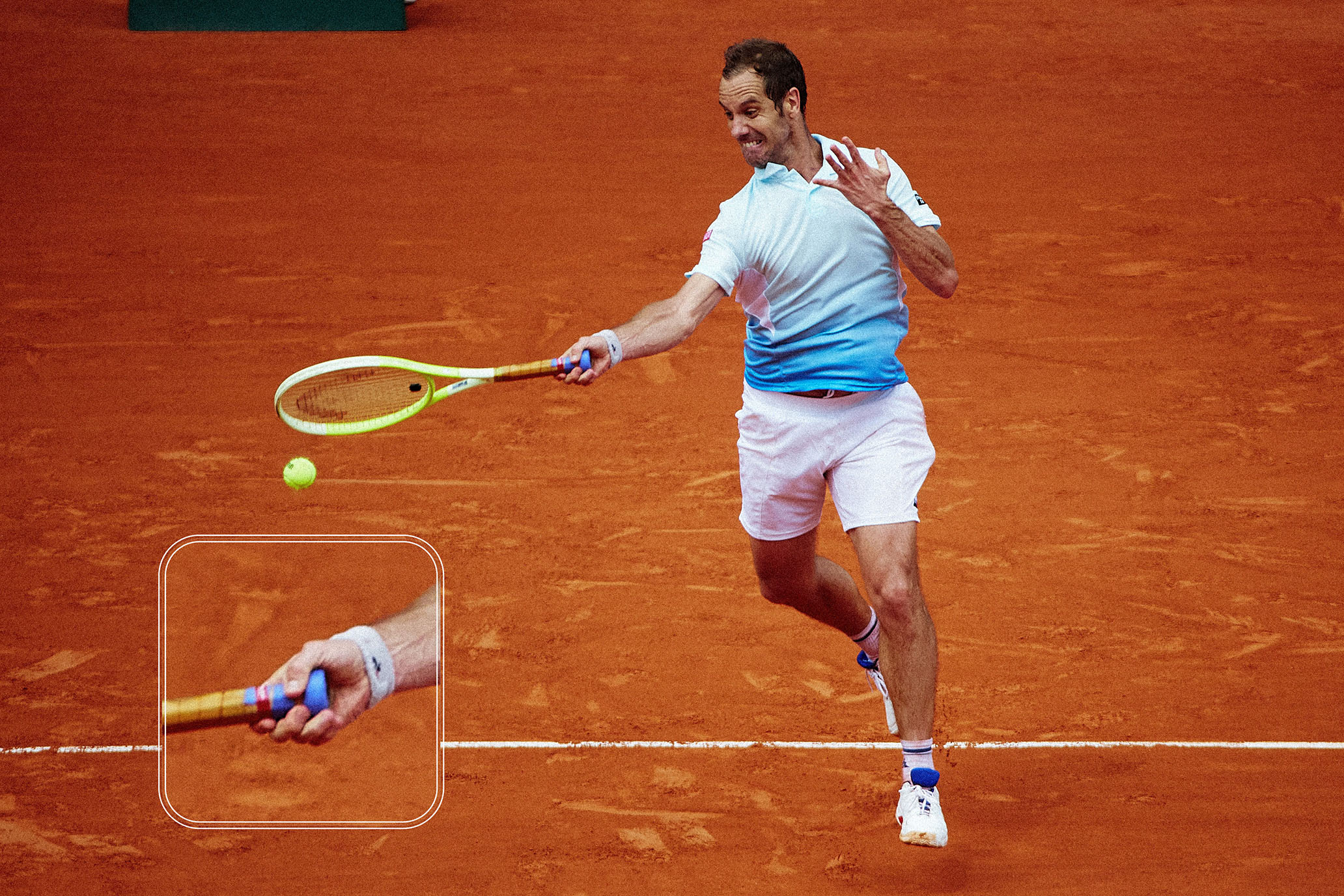
We'll likely never see a grip setup like this again. // Getty
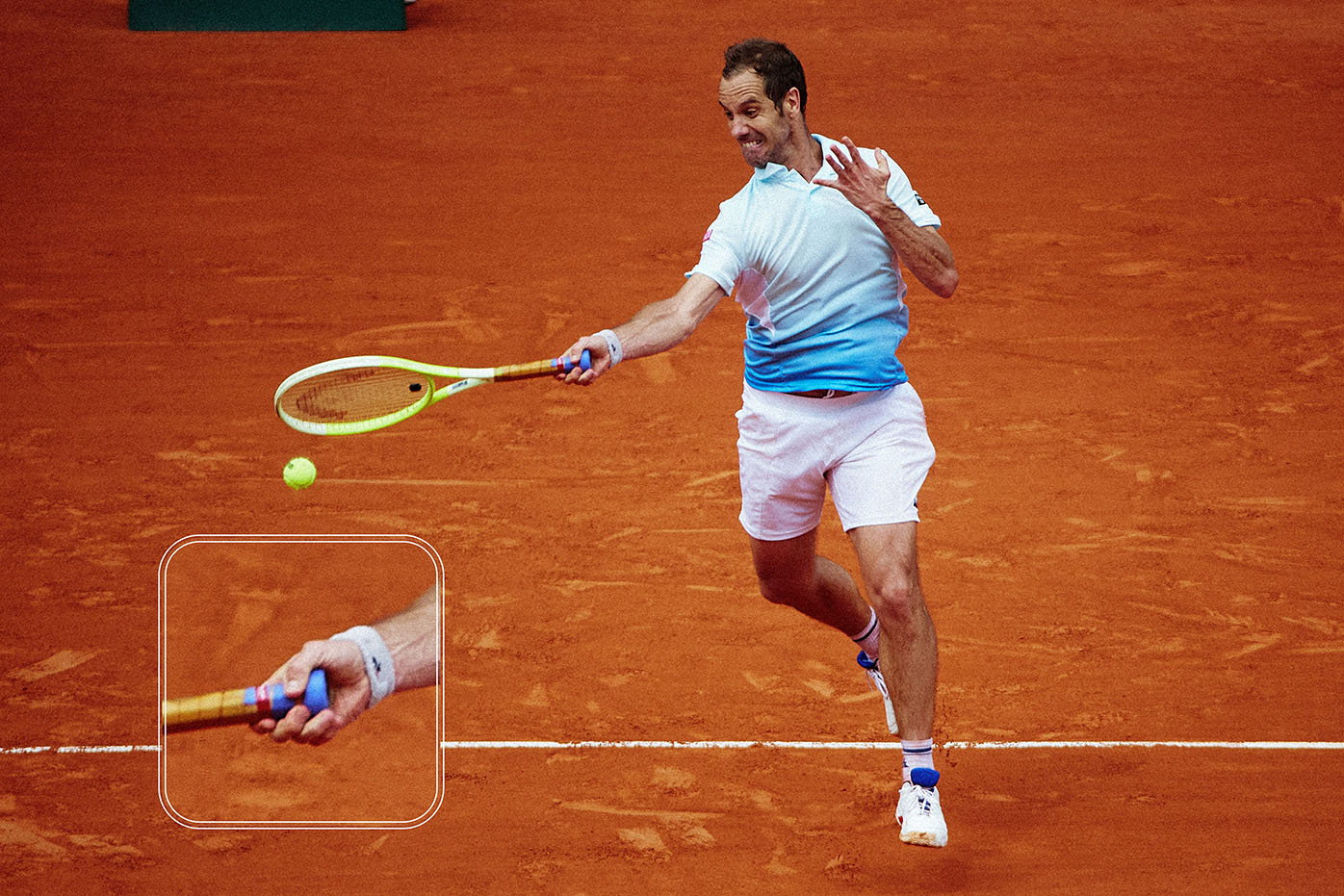
We'll likely never see a grip setup like this again. // Getty
It is common to look back at his potential as a youth and portray Gasquet as an underachiever. Perhaps this is true. But perhaps this just says more about the vast differences between junior tennis and the physically mature version of the game. For my part, I suspect that Gasquet performed quite well given the competition in his era and the limitations he had to work around. If you looked only at his signature shot—that casual, omnipotent one-handed backhand—you’d think everything in tennis came easily to him, and that his struggles were only due to a lack of diligence. A closer inspection reveals plenty of other challenges. The forehand technique was not nearly as pure as the backhand. With his modest stature—it seemed as though his six-foot frame consisted of more neck than legs—his serve never won him many easy points. And as the sport became increasingly athletic, he lagged behind the tour’s elite in terms of foot speed and ground-stroke power. I picture him stationed in his preferred zone a few feet behind the baseline, striking technically brilliant shots but struggling to find the offensive depth or defensive court coverage that his top peers could access. It is a testament to his shotmaking and self-preservation that he managed to have as much success as he did, for as long as he did.
He never won a title above the 500 level. But perhaps it’s cooler to be known for a particular shot than for any particular title. Gasquet’s legacy will always be that one-handed backhand. It looks as easy and fluid as the shot you might pantomime with the back of your hand while pacing around your living room, except his version somehow imparts world-class topspin and pace on a very real tennis ball. Given the decisive shift toward two-handers in the modern game, it seems fair to assume we won’t see another backhand like it.
But here I propose that we add just one more element to the Gasquet legacy. It should be familiar to anyone who has ever looked closely at his racquet, perhaps when he was wrapping a new overgrip around the handle at warp speed, as was his ritual during changeovers. The butt of his racquet flares out so dramatically that it looks like he has attached a doorknob to the end. Other pros, like Robin Soderling or Feliciano Lopez, have opted for a light flare, but none have taken it to such an extreme. A friend of Gasquet’s customizes the racquets for him, mummifying the bottom of the racquet in layers of leather grip, which Gasquet then covers with even more blue Tourna Grip. He said he uses this custom grip specifically to suit his backhand. He rests his pinkie finger right on top of the flared butt, and his wrist stays relaxed through the shot. One can visualize this bulbous shape “locking” the racquet in place inside his palm, preventing any slippage, even as he swings freely and expressively. For the sake of posterity, let us remember both components: the legendarily big backhand of Richard Gasquet, and the legendarily big butt that enabled it.
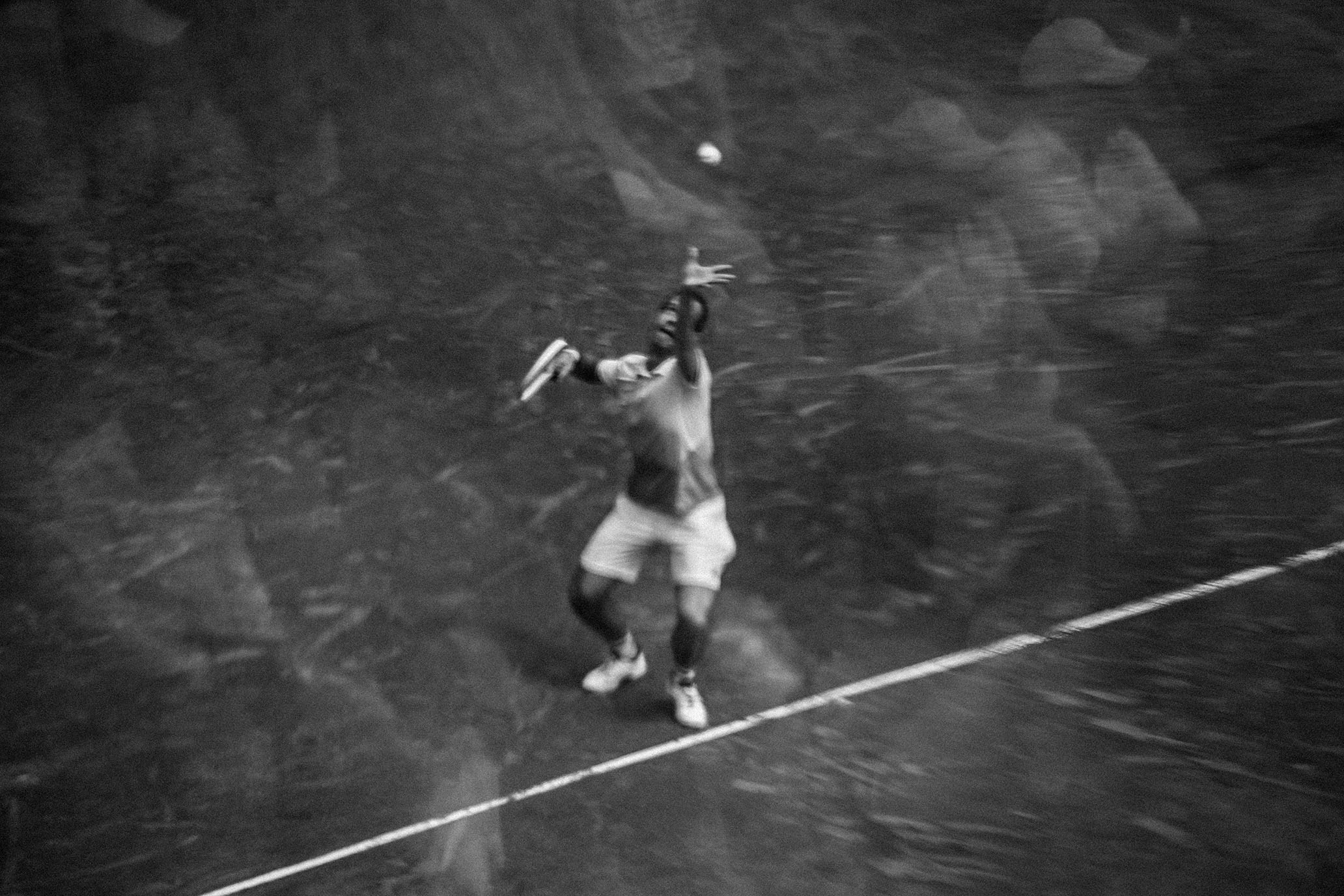
Richard Gasquet during his final appearance at Roland-Garros. // Sandra Ruhaut/Getty
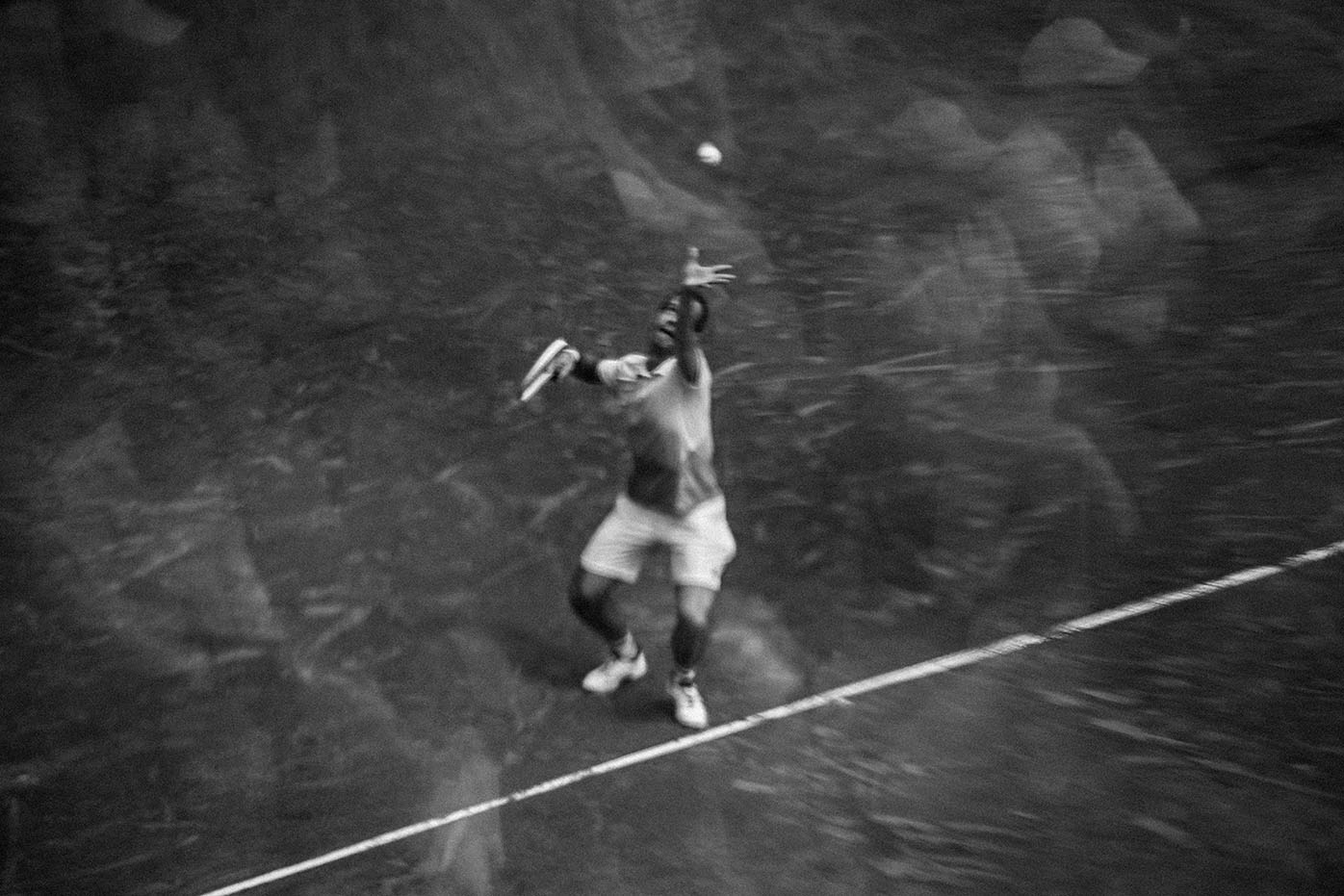
Richard Gasquet during his final appearance at Roland-Garros. // Sandra Ruhaut/Getty


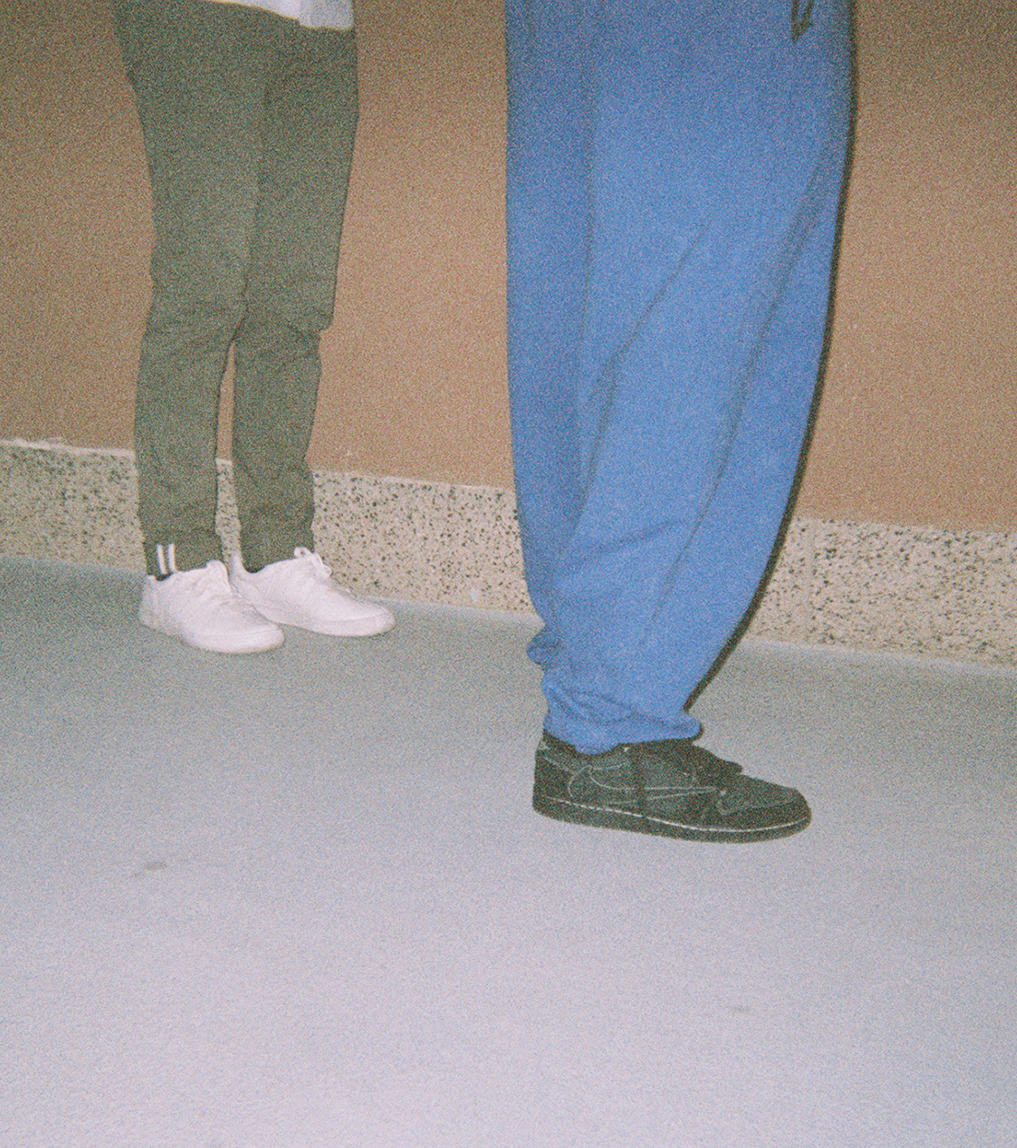


SIGN UP — YOU'RE ONLY AS GOOD AS YOUR SECOND SERVE.
Third Time's the Charm
Third Time’s the Charm
Third Time’s the Charm
Artadia’s third annual tennis tournament returns to support artists.
Artadia’s third annual tennis tournament returns to support artists.
By Dominique Clayton
May 25, 2025
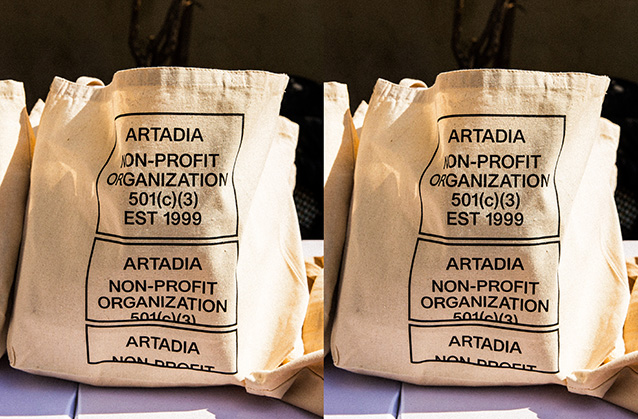
Nina Fernandez/BFA.com
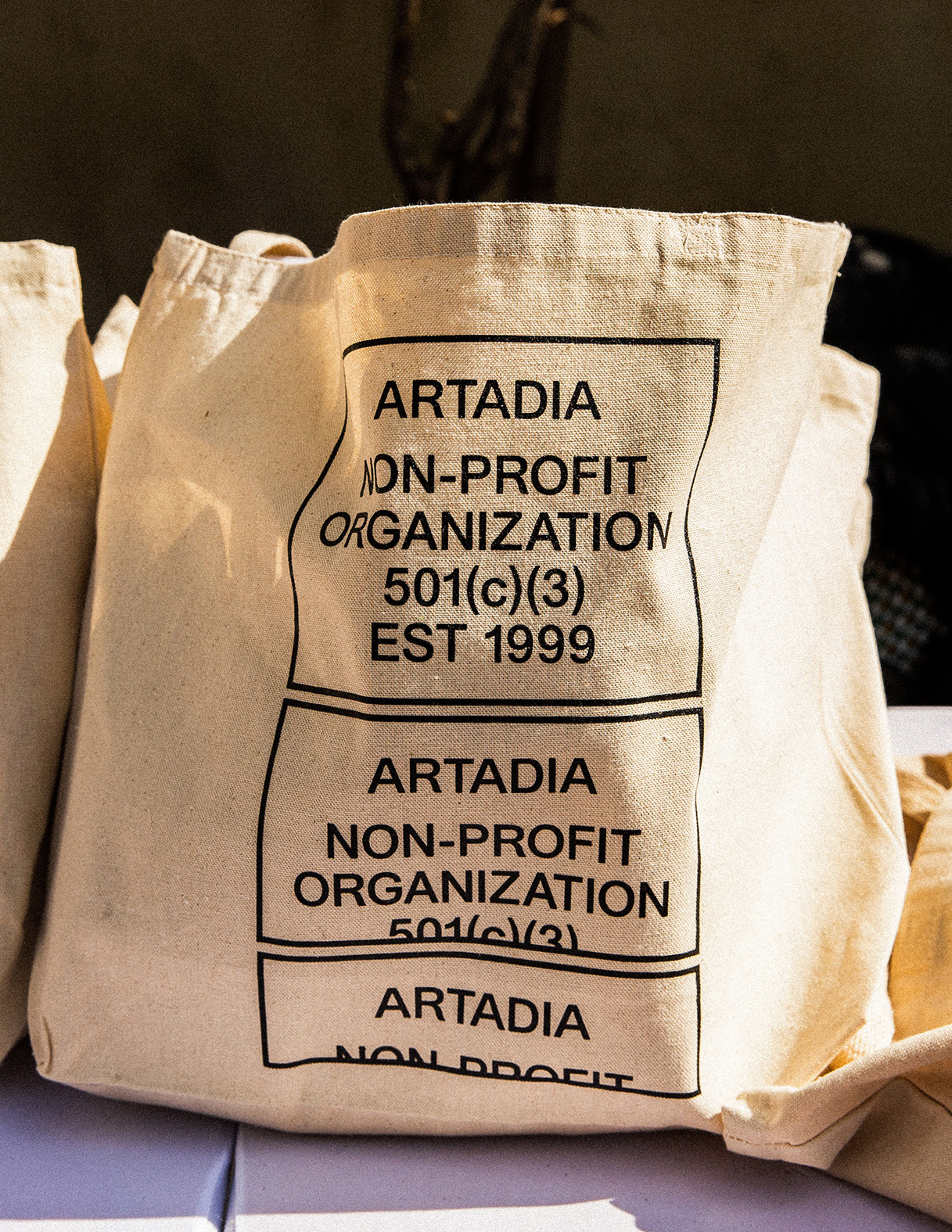
Nina Fernandez/BFA.com
Last Monday, L.A.’s art community gathered at the historic Los Angeles Tennis Club for Artadia’s annual tennis tournament, a special initiative launched in 2023 to support Artadia’s regional artist awards, currently activated in seven cities across the U.S. Founded in 1999, Artadia has awarded more than $6 million in unrestricted funds to 430 artists in its program cities in a mission to “strengthen their communities through a proven combination of recognition, grantmaking, community support, and advocacy.” Esteemed curators and arts leaders serve as the selection committee for merit-based unrestricted awards ($15K) aimed to support artists at pivotal times in their careers.
Cochaired by Rafael Flores, Charles Gaines, and Jennie Lamensdorf, this year’s benefit connected about 120 patrons, including art dealers, curators, artists, and collectors. Half the crowd grabbed racquets, joining in a rotating doubles LVBL format on the court. I particularly enjoyed watching art collector and film producer Michael Sherman nail some wins in the doubles match, and curator/writer Larry Earl also showed off his skills with another group across the courts. I lost track of score as the smell of the grill led me upstairs at the club, where I had a better view of both the courts and the taco buffet. L.A. delivered its signature perfect sunny day, making everyone on and off the courts look and feel great.
Over lunch, Claire Malloy, Artadia’s director of advancement, shared that the event, originally set in February to kick off Frieze L.A. week, was rescheduled to prioritize wildfire relief for L.A.-based awardees. Patton Hindle, executive director, shared remarks thanking everyone for their ongoing support and commitment, which is critical especially during a divisive moment in politics and culture. While the spring gala season has many artists and patrons jet-setting and dressing up for black-tie evening events, the Artadia tennis tournament is a refreshing way to gather outside in the sun for the sake of art, fun, and community. This year’s fundraiser generated enough funding to directly support Artadia’s Awards program (three awardees) and ongoing work in Los Angeles.
Takeaways: Tennis makes everyone look great. Wear sunscreen. And say yes to charity games and tournaments. It’s a win-win for all.
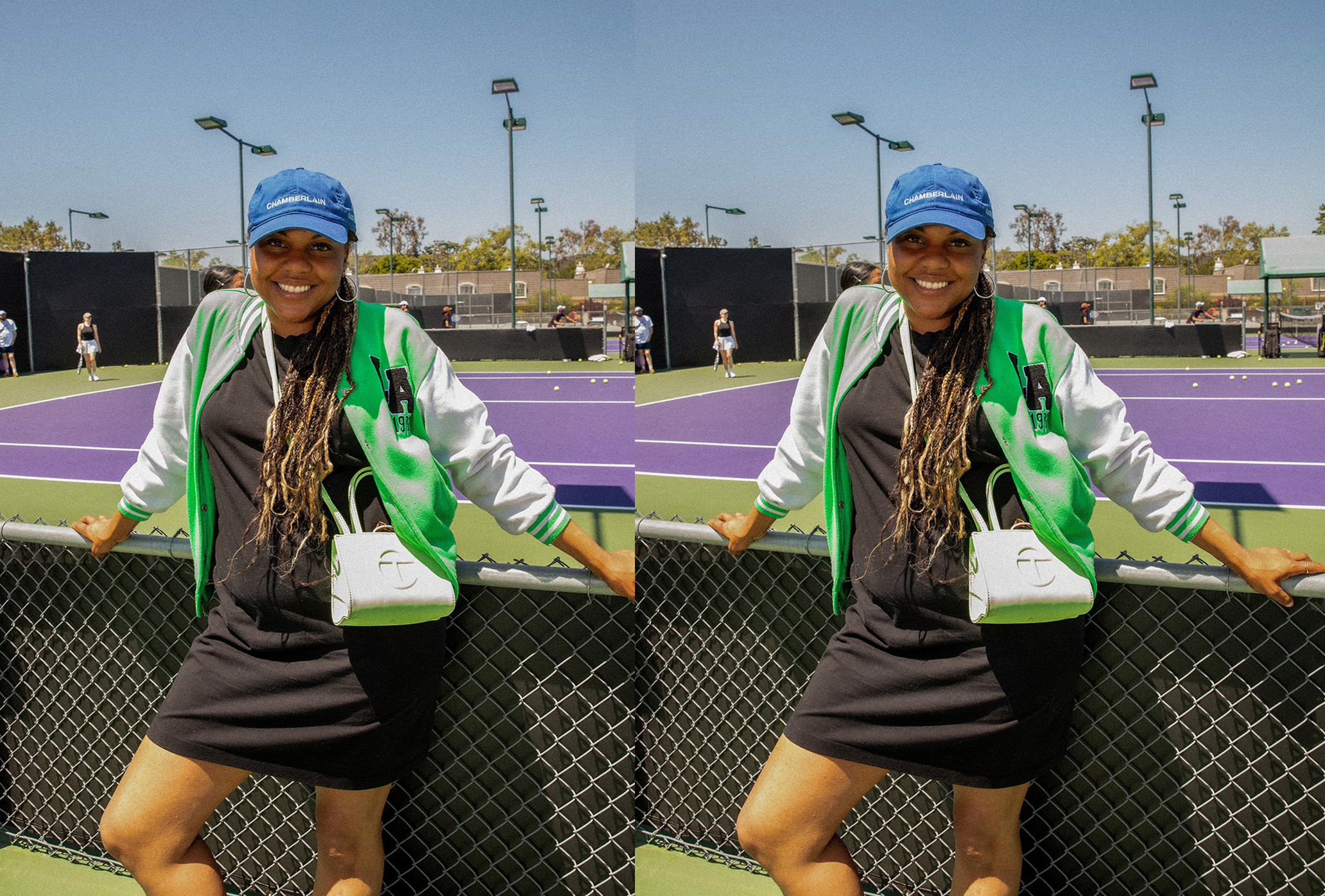
Our own Dominique Clayton at the Los Angeles Tennis Club, May 20, for the third annual Artadia fundraiser. // Nina Fernandez/BFA.com
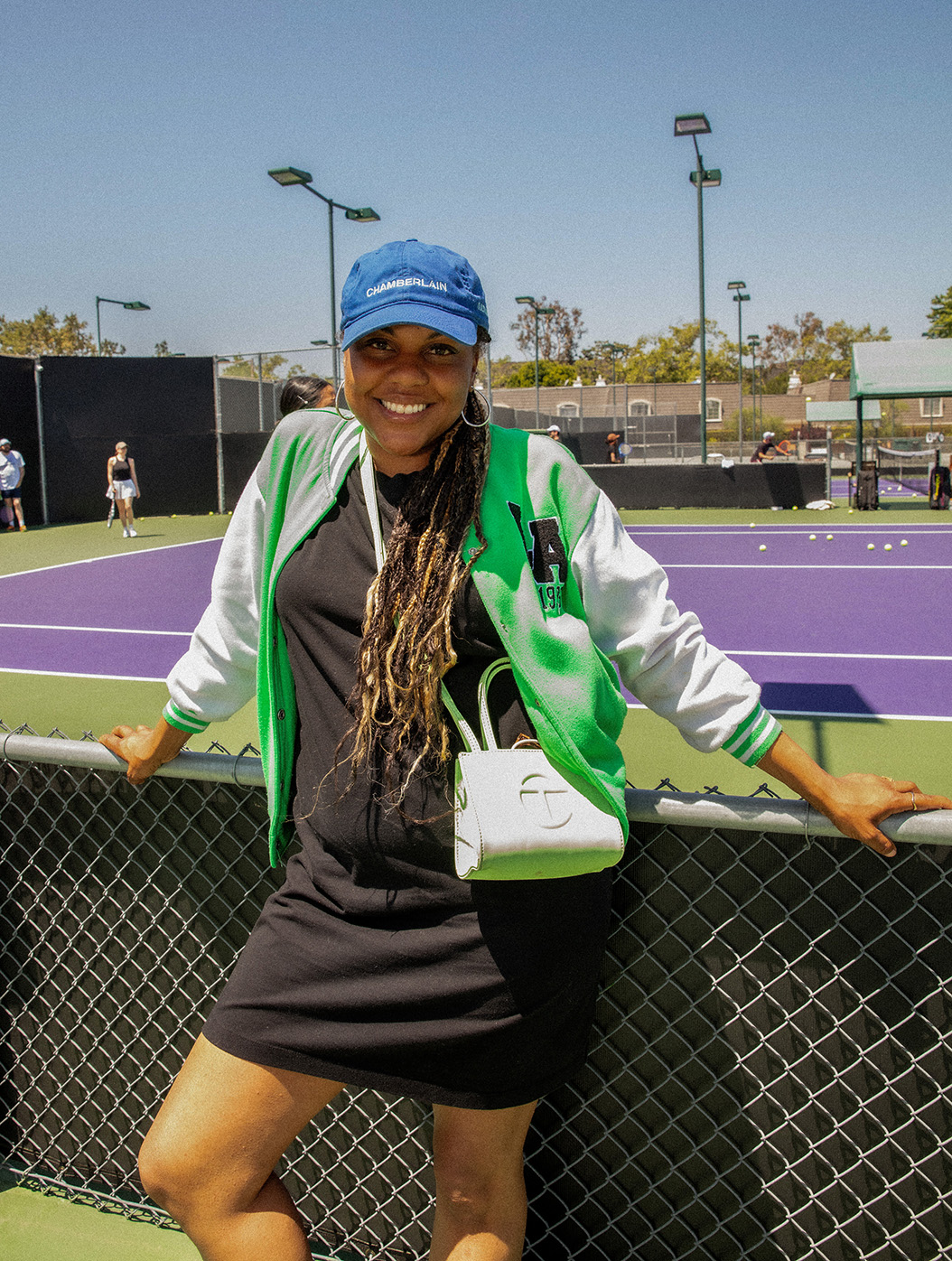
Our own Dominique Clayton at the Los Angeles Tennis Club, May 20, for the third annual Artadia fundraiser. // Nina Fernandez/BFA.com

PURE, ORIGINAL TENNIS — SIGN UP!
The Rodin of Roland-Garros
The Rodin of Roland-Garros
The Rodin of Roland-Garros
Book Review: The Warrior: Rafael Nadal and His Kingdom of Clay, by Christopher Clarey.
Book Review: The Warrior: Rafael Nadal and His Kingdom of Clay, by Christopher Clarey.
By Patrick J. Sauer
May 23, 2025
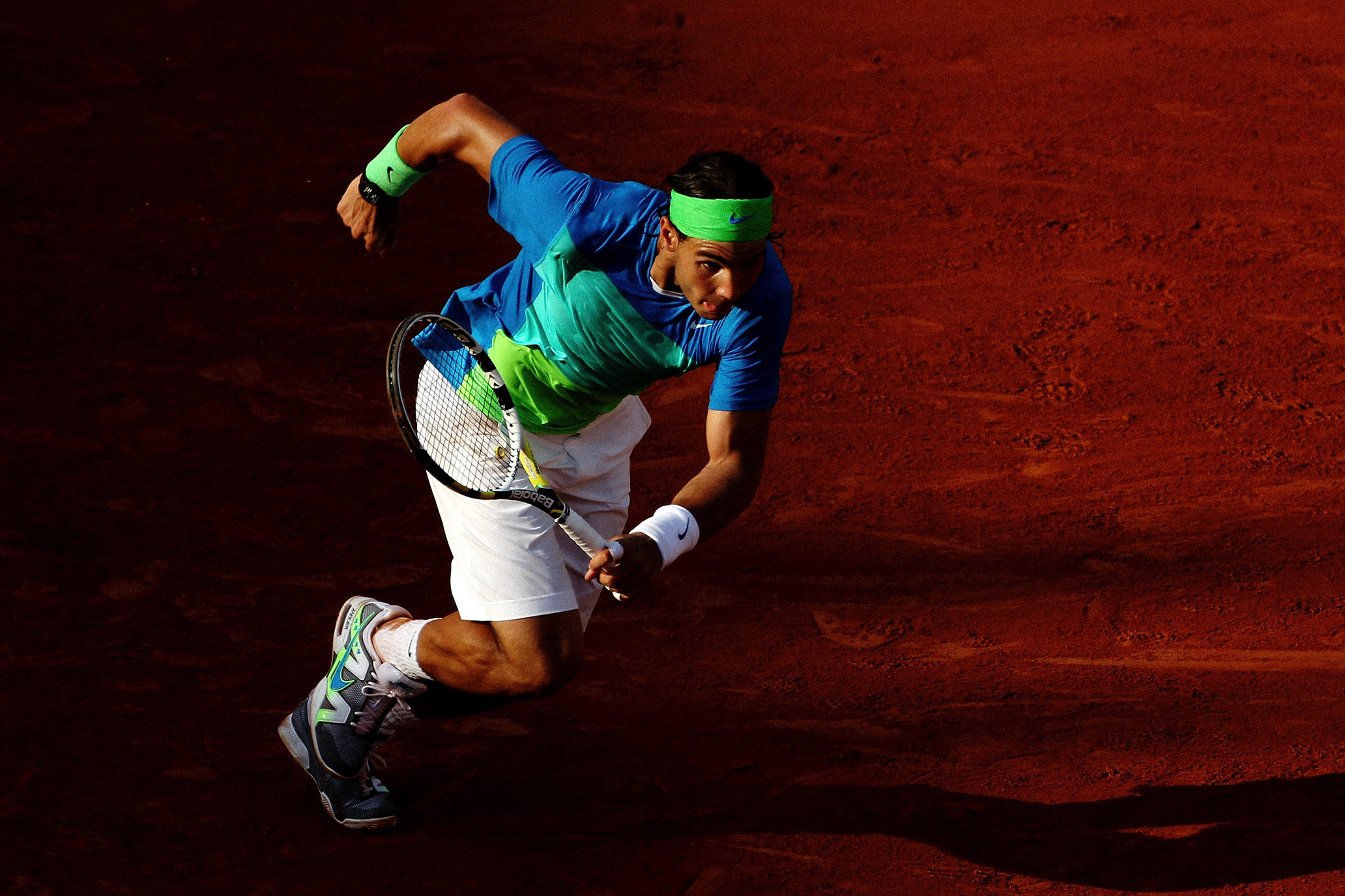
Rafael Nadal during his bounce back campaign at Roland Garros, 2010. // Clive Brunskill/Getty
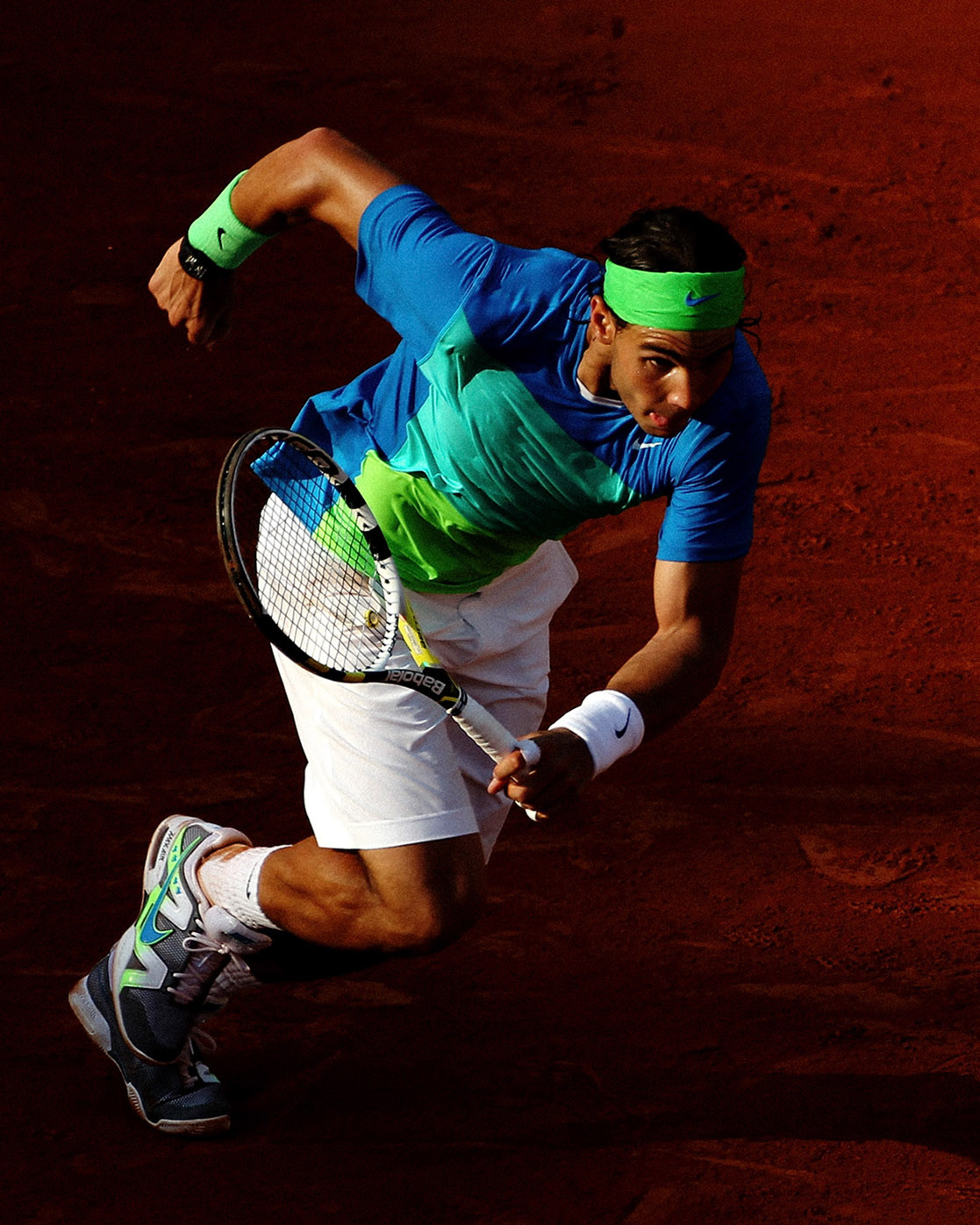
Rafael Nadal during his bounce back campaign at Roland Garros, 2010. // Clive Brunskill/Getty
The French Open is upon us, and a feeling of loss is creeping in from the shadows of Court Philippe-Chatrier. For the first official time it won’t feature the clay artistry of its greatest sculptor, the Rodin of Roland-Garros, Rafael Nadal. There is a grand farewell planned for kickoff night, May 25, which is both obvious and a little silly, since they already dedicated a statue to his greatness. However, over the course of the tournament, it will be a bit sad and strange to check in on the men’s draw and not see El Matador lancing his opponents. But while it may be so hard to say goodbye, it’s still easier than grasping his overall French Open numbers, equally quantifiable and unfathomable.
Rafa’s armada of fans are well aware of the 14 French Open titles and his 112–4 record, but dig a little deeper in the red clay and things get really salvaje y loco. Behold, a brief sampler from Nadal’s 19 appearances: Of his 112 victories, 90 were in straight sets; his overall sets lead capped out at 333–37; he didn’t drop a set in four different years; he was undefeated in the finals and never even went to a fifth set; between 2005 and 2021 he had match-winning streaks of 31/35/39 on the terre battue; his bagel record is a spotless 24–0; and it was 17 years from his first title, at 19, in ’05, to his last, at 36, in ’21. We could keep tilling statistics, but it would be all to say, when it comes to the level of domination Nadal held over two decades of Roland-Garros fields, there are no words.
Unless you happen to be Christopher Clarey, author of the fantastic new book The Warrior: Rafael Nadal and His Kingdom of Clay. There is no more qualified journalist—at least among American scribes—than Clarey. Not only is he a sportswriter who spent 30 years spanning the globe to cover the entirety of the Big Three era for The New York Times, and he also he married a Parisian in the early ’90s and was able to stroll down the Seine to work.
Clarey—now dropping knowledge at the Tennis & Beyond Substack—crafts the book by splitting the difference between a cradle-to-calling-it-a-career biography of the only man to rank No. 1 in three different decades, and a laser-focused look at Nadal’s favorite surface and venue. He works wonders crocheting these two constructs into whole cloth. It’s been a long, ongoing conversation between Rafa and Clarey, trust built tournament upon tournament, so The Warrior is authoritative and thorough but also feels like it’s happening in real-ish time, given that Nadal’s retirement isn’t even six months old. Clarey’s match-play descriptions are vivid to the point of coming across like live audio—Bud Collins’ voice, naturally—because he was always there, but he’s also no longer hemmed in by Times style and can wax poetically, curiously, or humorously where he sees fit. Nada’s still-shocking 2009 defeat by Robin Soderling (with whom El Matador had beef, who knew?) includes an anecdote of Clarey realizing what was unfolding and sprinting from the pressroom to try to find a seat at the match he’s been ignoring, a personal history of the upsettee, a digression into if it’s the biggest upset in tennis history, and a look at Nadal’s bounce-back 2010 title. It would be No. 5, the one that, LOL, left him one Roland-Garros championship short of all-time leader Bjorn Borg.
In delivering The Warrior while Nadal’s clay footprints haven’t faded away, I think Clarey is astutely marking his authorial territory. Given that his previous book The Master: The Long Run and Beautiful Game of Roger Federer came out the year before Rog hung up the strings, it’s not a leap to presume a Djokovic tome is in the works, definitive markers of the trivalry before the first post–Big Three history is written. Individualizing biographies allows Clarey more space to take readers down relevant rabbit holes, adding layered depth that goes far and beyond the on-court brilliance.
There are different ways the structure plays out in Kingdom of Clay—a fine enough subtitle, but Empire of Dirt was sitting right there, and “I hurt myself, today” is a recurring Rafa theme—and here are two, one big, one small. The former is chapter 4, “The Canvas,” a fascinating 23-page exploration of clay courts, which Clarey believes in an age of homogenization are “still for the grinder, the geometer, and maybe even the deep thinker.” He gets into the nitty-gritty of the annual March Roland-Garros construction, from white limestone to the famed ochre surface, and goes worldwide highlighting different styles of clay, like in India, where there’s a tradition of courts being topped with dried rolled cow pies.
The latter, granular example is chapter 14, “The Rituals.” In six pages, Clarey observes and lists Rafa’s on-court oddities like his career-long wedgie-pulling habit, the evolution of the headband-nose-ear touching, and whatever the hell he’s doing with the sideline water bottles. Turns out it’s not OCD. The service game goofiness is a timing mechanism—first introduced to Nadal as a kid to slow down his warp-speed pace—that took on a life of its own and even irritates the practitioner himself. (Except for the underwear tug: Nadal says, “I could never get rid of. It’s impossible.”) The Evian shuffle thing isn’t superstition either; it’s a way to prevent his mind from wandering during changeovers. Call the tics funny or annoying, but don’t call them without purpose. One legend’s bizarre behavior is the same legend’s decision to sport clamdiggers.
In lesser hands, these detours would be interesting and perhaps a bit superfluous, but Clarey doesn’t waste a sentence. Understanding how clay is made and how ritualisms function gives complexity and nuance in understanding why Nadal owns Roland-Garros. At its essence, it all adds up to Rafa’s unparalleled sliding technique, a primary key to his kingdom of clay. Fitting Nadal’s game, The Warrior is methodical and deliberative; it’s not the dishy, breezy whirlwind circus-come-to-town read of our previous selection, John Feinstein’s Hard Courts. Although, take note, there’s one gossipy headline-making-any-day-now moment late in The Warrior where French Open administrator Gilles Jourdan compares “false ideal son-in-law” Federer with “real deal” Nadal. It’s an assessment Clarey calls “intriguing” while also saying it was never his experience dealing with Roger and probably has something to do with his 0–6 French Open Fedal standing.
If The Warrior sounds of interest, I recommend learning from a reviewer’s grave mistake. I put the book on a page-count deadline clock, knocking it out in four days. I wrong-footed myself. It would’ve been better to let Clarey’s prose unfold over the course of a few weeks, to open it up and let it breathe, to savor it like a bottle of fine French whiskey. (It exists!) Rafael Nadal is going to be deservedly feted throughout this year’s Roland-Garros, and The Warrior is the perfect companion piece. Go roll around in the dirt of the greatest singular achievement tennis will ever know. Rafa, our sweetest friend, will be missed.
But everyone goes away in the end.

